





Executive

The Business of Net Zero Special Feature p26

p04. The Female Founders Resurgence
p08. Exclusive Interview: Jay Lim
p12. Corporate Hospitality Strategy
p14. Exclusive Interview: Tom O'Neil
p16. Steven Bartlett's £100 Deal Rejection
p18. Exclusive Interview: Byron Baciocchi
p22. Exclusive Interview: Ed Ferris
p25. Gender Equity & Inclusion Initiative
p27. Foreword From The Editor
p28. Nature as an Asset Class
p30. Brand Strategy For Net Zero
p32. Shell's Data Centre Cooling Revolution
p34. NHS' Net Zero Initiative
p36. Net Zero Case Study: Royal Mail
p38. Aviation Fuel Synthesis
p40. UK Clean Energy Agenda Accelerates
p42. UK's New Carbon Credits Framework
p44. Net Zero Case Study: V1CE
p46. British GP Essential F1 Guide 2025
p68. Stealth Luxury from Bentley
p72. De Tomaso Returns To Automotive Purity
p76. Palm Beach Inspiration with Aston Martin
p80. BOVET's Solution to Global Timekeeping

EDITORIAL
Elizabeth Jenkins-Smalley
Editor in Chief editorial@theexecutivemagazine.com
Alice Weil
Business Editor
Jack Bell
Lifestyle Editor
Aleks Bond
Travel Editor
Molly Ferncombe
Features Editor
Mike Jennings Food & Drink Editor
Aaron Kelly Art Director
SALES
Adam Busby Director of Strategic Partnerships advertising@theexecutivemagazine.com
Nathan Taylor
Strategic Partnerships Lead
Elroy Oduor Business Development Manager
MARKETING
Bjorn van den Akker Marketing Director
Jack Salmon
Subscriptions Manager subscribe@theexecutivemagazine.com
Elie Robbins
Outreach Project Manager
MANAGEMENT
Francis Falodun
Operations Manager
Ian McDonald
Finance Director
COMPANY
©Executive Media Group Ltd
Studio 306 Bonded Warehouse Manchester, M3 4AP
Tel: 0208 1359 527
Company No. 14993504
VAT No. 444948655
Fresh analysis from Fuel Ventures reveals a transformative shift in UK entrepreneurship demographics, with female-led startups increasing by nearly half over ten years. The comprehensive report, drawn from thousands of pitch submissions, unveils crucial insights into successful funding strategies, regional growth beyond London, and the rising prominence of experienced entrepreneurs challenging traditional startup stereotypes

VVenture capital firm Fuel Ventures has released compelling new data showing a 45% rise in female founders pitching to investors over the past decade. The findings, compiled from pitch submissions since the firm’s establishment in 2014, highlight a particularly notable acceleration, with a 30% increase recorded in just the last five years.
The report offers a remarkable window into startup trends, analysing approximately 6,000 annual pitches—equivalent to one submission every 88 minutes. This substantial dataset provides valuable intelligence on founder demographics, investor preferences and optimal pitch timing, creating a comprehensive picture of the evolving entrepreneurial landscape.
The data strongly indicates that partnership remains a key factor in securing early-stage funding. A striking 76% of successful pitches originated from ventures with co-founders, suggesting that investors continue to favour teams that bring complementary skills and distributed leadership.
This trend aligns with broader research indicating that balanced founding teams often demonstrate greater resilience and adaptability—qualities essential for navigating the challenges of early-stage growth and development.
While London maintains its position as the primary hub for startup activity, the report identifies significant momentum building in other UK cities. Birmingham has recorded an impressive 120% increase in founder activity throughout the decade, closely followed by Manchester with 95% growth.
These figures reflect a meaningful shift away from centralisation, with entrepreneurial energy spreading across the UK. This
geographic diversification suggests a maturing ecosystem where talent, resources and opportunity increasingly extend beyond traditional centres, creating a more balanced national landscape for innovation.
The data challenges the persistent stereotype of successful tech founders being predominantly young. Fuel Ventures reports a 35% increase in pitches from entrepreneurs aged over 40, signalling a significant trend of professionals leveraging substantial industry experience to launch ventures later in their careers.
This demographic shift indicates a growing recognition that deep sector knowledge and established professional networks can provide mature founders with advantages that often outweigh the perceived benefits of youth. The trend also suggests a broadening opportunity landscape where entrepreneurship becomes accessible across multiple career stages.
Analysis of pitch content reveals contemporary priorities and potential red flags for investors. Artificial intelligence dominates current discussions, appearing in 86% of recent pitch decks. However, Fuel Ventures notes that approximately 20% of these mentions lack substantive AI capability—highlighting a gap between trending terminology and actual technological implementation.
Other frequently employed terms include “disruption” (61%), “scale” (52%), “sustainability” (45%) and “pivot” (32%). The prevalence of these terms reflects both market priorities and the evolving language of entrepreneurship, though the report suggests that substance ultimately matters more than terminology.
Mark Pearson, founder of Fuel Ventures, reflected on the findings: “Every pitch deck tells a story—some better than others. We’re fortunate to have a front-row seat to the ambition, creativity and resilience of the next generation of entrepreneurs. It never gets old.”
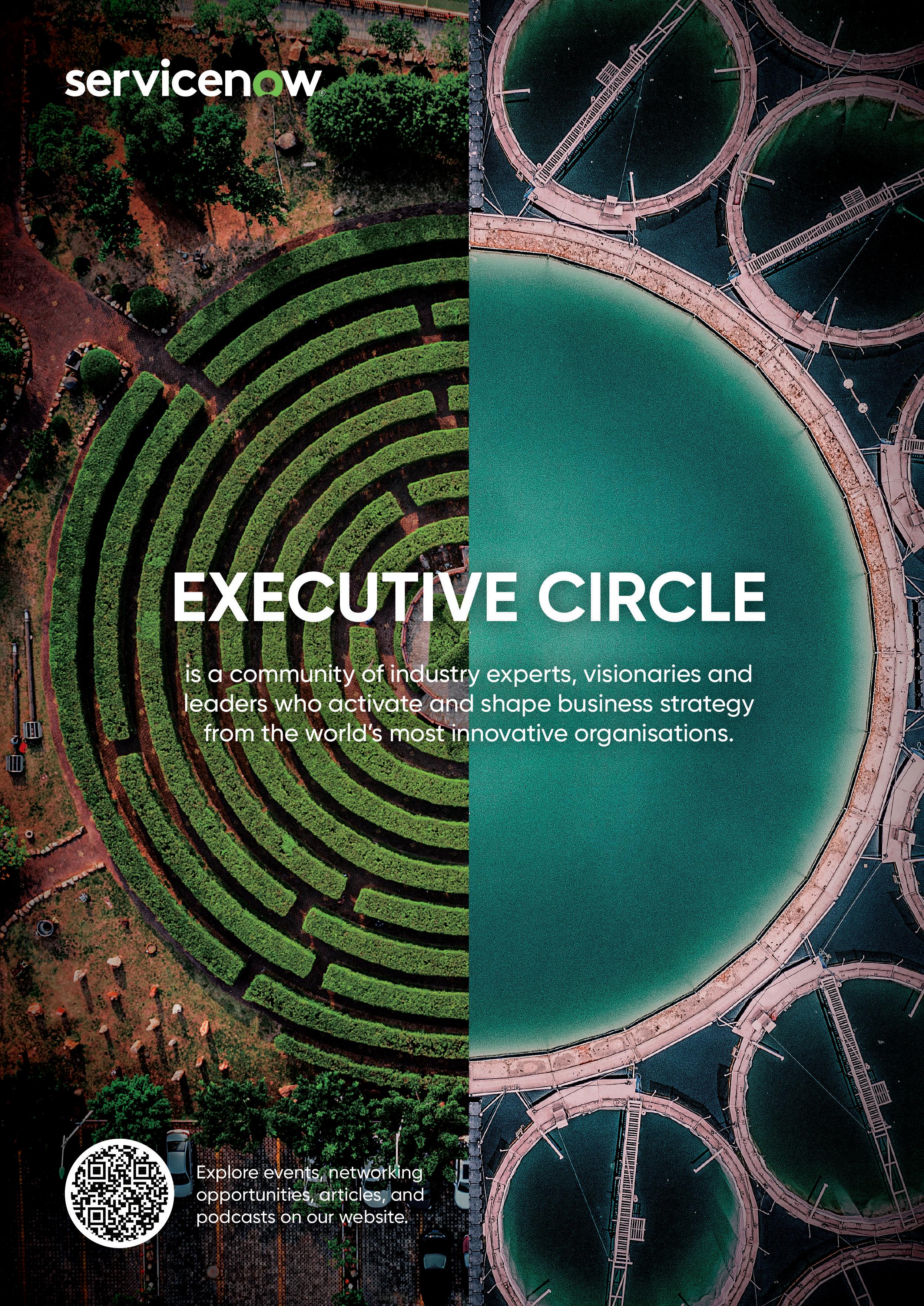

Chief Product Officer at OneAdvanced
Amanda Grant, Chief Product Officer at OneAdvanced, speaks exclusively to The Executive Magazine about orchestrating one of the most significant transformations in enterprise software—turning artificial intelligence from corporate buzzword into mission-critical business advantage

AAmanda Grant has achieved what many technology leaders only dream of: successfully transforming a major enterprise software company whilst simultaneously pioneering responsible AI deployment across Britain’s most sensitive sectors. As Chief Product Officer at OneAdvanced, Grant spearheaded the organisation’s radical restructuring around eight distinct customer verticals, fundamentally reshaping how the company approaches product development and customer value creation. Her strategic vision has positioned OneAdvanced as the definitive authority on secure AI implementation, with solutions now protecting critical infrastructure from NHS 111 services to government departments handling classified information.
Speaking exclusively to The Executive Magazine, Grant reveals the methodical approach that enabled her team to solve enterprise software’s greatest challenge: delivering AI solutions that are simultaneously innovative and uncompromisingly secure. Her philosophy of transforming “feature factories” into “value creators” has become the industry standard for technology leaders seeking to harness AI’s potential without sacrificing operational integrity. Under her leadership, OneAdvanced has developed AI systems that don’t just process data—they actively save lives by identifying critical patterns in patient records and streamlining emergency
response protocols. Grant’s insights offer a masterclass in strategic leadership for executives navigating the complex intersection of technological advancement and regulatory compliance.
OneAdvanced recently reorganised around eight customer sectors. How has this transformation influenced your approach to product strategy and leadership?
“Our shift to a sector-focused structure completely reshaped how we develop products and serve customers. Previously, the focus was on features; now, it’s on outcomes. By concentrating on specific sectors such as healthcare, government, and legal, we gain a deeper understanding of each sector’s unique challenges. This allows us to deliver tailored solutions that address critical business issues. For leadership, it means fostering a culture of collaboration between teams and customers, ensuring every decision is grounded in how we can provide better value.”
Your product teams have moved from being ‘feature factories’ to ‘value creators’. How does this mindset impact decisions about AI implementation?
“Being value-driven fundamentally changes the way we approach AI. Instead of adding AI for the sake of innovation, we begin with a clear question: what problem are we solving for the customer?
AI is a powerful tool, but it’s not a solution in itself. We look at how it can enhance user experience, streamline operations, or provide predictive insights that wouldn’t otherwise be accessible. For example, in healthcare, AI can flag crucial data patterns in patient records, helping professionals make quicker, better-

informed decisions. It’s about leveraging AI responsibly to create meaningful outcomes.”
For sectors like healthcare and government, how do you ensure your AI solutions are safe, trusted, and secure?
“With two out of three companies allowing unrestricted AI use in business while still identifying data security as a top concern, the need for a reliable solution has never been clearer. In response we created OneAdvanced AI —with a focus on safety, trust, and security.
“Our solutions are designed to support critical sectors like healthcare to government, with a focus on safeguarding sensitive information. We take a multi-layered approach to security, combining rigorous testing, regulatory compliance, and collaboration with cybersecurity experts to protect against risks like data breaches. Transparency is at the heart of our process – ensuring you retain full control over your data while benefiting from the power of AI.”
How does your team validate that an AI solution solves real customer problems before deployment?
“Validation starts from day one. We build solutions collaboratively
with our customers and gather their input at every stage of development. By involving users early, we ensure the AI aligns with their needs. We run live tests with front-line staff to identify pain points and refine functionality long before deployment. Postlaunch, we continuously solicit feedback and refine solutions to ensure they thrive in real-world applications.”
With new AI regulations emerging, how does OneAdvanced balance compliance requirements with innovation?
“Regulations are a vital part of responsible AI adoption, and we welcome their evolution. Our approach is to treat compliance as a foundation for building trustworthy products, not as a limitation. We work closely with in-house experts to stay ahead of legislative changes while maintaining agility. This includes aligning closely with initiatives like the AI EU Pact, which fosters collaboration and sets a framework for ethical AI development. By integrating these standards into our processes, we ensure that every new feature we develop complies with data security laws, ethical frameworks, and global standards for responsible AI.”
How do you address unique security and trust concerns when using AI in sensitive environments, like the NHS 111 service?
“The NHS 111 service is a prime example of a sensitive ecosystem where trust is of paramount importance. Our approach begins with building explainable AI systems. This means we ensure every recommendation or decision-making process is transparent and traceable. We also provide robust fail-safes so that critical decisions always sit with human professionals, ensuring AI supports them. Additionally, we prioritise data sovereignty by ensuring that all patient data is stored and processed within the UK, complying with local regulations and safeguarding privacy. Furthermore, we adhere to stringent data governance policies and seek external auditing to maintain our customers’ trust.”
What challenges do you foresee for enterprise software providers in delivering AI that balances innovation with safety and trustworthiness?
“One of the primary challenges is ensuring AI systems are free from bias while remaining adaptable to various user-specific needs. We’re also seeing rising pressure to deliver AI solutions that scale effectively across enterprises of all sizes while keeping costs manageable. Another significant challenge is simplifying AI tools for non-technical users. Balancing these demands without compromising ethical development will define the future of our industry.”
How do you see your role as CPO evolving over the next five years as AI capabilities develop, and what new services might OneAdvanced introduce to meet emerging market needs?
“The role of the CPO will inevitably become more deeply intertwined with ethical oversight and strategic partnerships. As AI grows more sophisticated, it’s critical to ensure that ethical frameworks and customer needs guide development—not just the pace of technological progress. At OneAdvanced, we will continue expanding services that enable seamless automation, advanced predictive analytics, and smarter decision-making tools. One area of growth we’re excited about is the integration of AI into sustainability planning, helping businesses achieve their goals without compromise.”
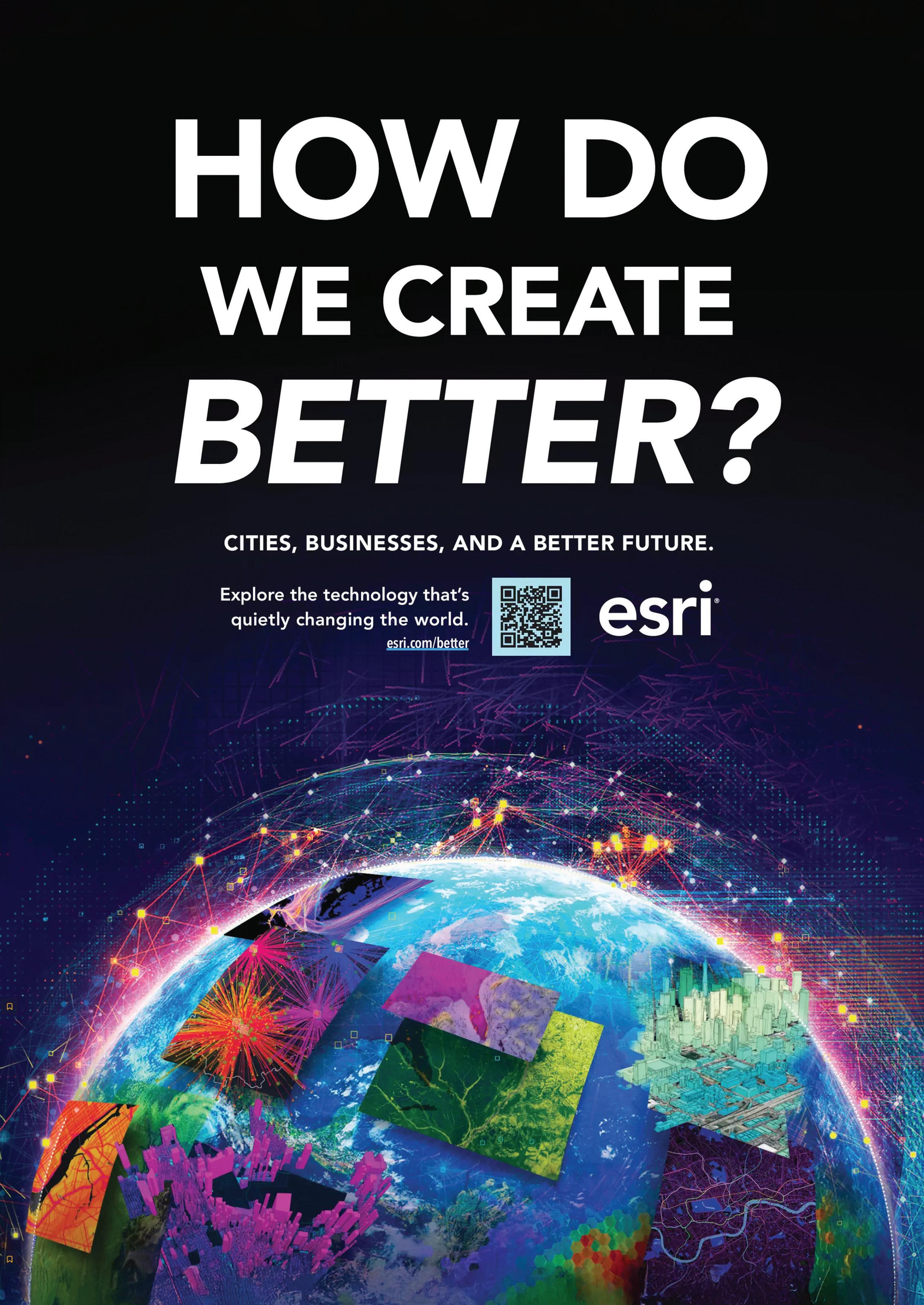

BlockOffice is redefining financial services for the digital age. From Singapore to the US, this rapidly growing firm offers Web3, AI, and gaming startups an alternative to legacy consulting models. In this exclusive interview with Founder and CEO, Jay Lim shares his vision for transforming back-office operations and reveals the strategies behind his company's remarkable success
JJay Lim's BlockOffice is redefining financial services for the digital age. From Singapore to the US, his rapidly growing firm offers Web3, AI, and gaming startups an alternative to legacy consulting models. In this exclusive interview, Lim shares his vision for transforming backoffice operations and the strategies behind his remarkable success.
BlockOffice achieved $4 million in revenue and over 400 clients in its first year. What gap did you identify in the market?
"Traditional firms operate with static playbooks built for legacy industries. But Web3, AI, and gaming startups face dynamic regulatory landscapes, token-based business models, and fast go-to-market demands. We built BlockOffice to serve these emerging sectors with speed, precision, and domain fluency. Startups in these spaces need to look forward and build their vision—we are their partner who looks after their back office, sharing best practices in financial incentives like tokenomics, margins, and referral fees. By freeing up headspace for our clients, they are able to execute better. That's where we found the gap."
How do regulatory environments impact your US expansion compared to Singapore operations?
"The regulatory gap between Singapore and the U.S. is significant. Singapore is clear, efficient, and relatively progressive when it comes to crypto and tech-forward regulation. In contrast, the U.S. is still navigating ambiguity, especially with SEC oversight on digital assets. For our US clients, this creates complexity in fundraising, token issuance, and treasury management. We help them mitigate risk by setting up entity structures or operating through regulatory-friendly jurisdictions like BVI or Dubai. Our strength lies in giving clients optionality in uncertain environments."
Deloitte reports 25% of businesses adopting fractional hiring in 2025. How does your fractional executive model differ from traditional consulting?
"Most consulting firms offer theoretical advice. We provide execution too as a one-stop solution. Our fractional executives don't just provide decks—they plug directly into the startup's operations, aligning with KPIs and driving real outcomes. We prepare the mundane manual reports for their investors as well as their end-of-year filings. We've standardised playbooks for earlystage companies, from financial modelling to tech roadmaps, while still offering bespoke adjustments. Because we've worked across 400+ startups within a year, we bring pattern recognition and benchmark data that solo consultants simply can't match."
Your strategic acquisitions of Pixel8Labs and WhitepaperAuditor enhanced Web3 capabilities. How do they fit your vision of becoming a full-stack partner?
"Pixel8Labs brings deep product and UX capabilities, helping startups turn whitepaper concepts into usable MVPs. WhitepaperAuditor, on the other hand, enhances our credibility layer, ensuring token models, governance mechanisms, and economic assumptions are bulletproof. Together, they help us serve clients from ideation to launch: incorporation, product development, token design, marketing, treasury setup, and
investment—all under one roof. This is crucial for crypto founders who need to move fast and can't afford fragmented service providers."
The startups you support have collectively raised over $500 million. What financial strategies prove most effective for fundraising?
"In volatile markets, clarity and confidence win. The most effective strategy has been precision: a clear go-to-market plan, lean financials, and investor-ready narratives. We help clients forecast burn multiples, integrate token and equity economics, and structure cross-border legal stacks to fit investor expectations. We've also seen success in offering flexible instruments like SAFEs with token warrants, which appeal to both equity and crypto-native investors."
What fundamental innovations allow you to compete with Big 4 accounting firms while maintaining startup agility?
"Our model is modular and tech-enabled. Unlike Big 4 firms, we don't bind clients to fixed, multi-month retainers. We offer scalable packages—from incorporation-only to full-stack operations. We've built internal tools for financial modelling, onboarding, and real-time reporting, which cut down inefficiencies and costs. Most importantly, our team is built like a startup: global, asynchronous, and execution-first. That DNA lets us move five times faster than traditional firms yet charge less than branded firms who have to offset their high overheads."
What should founders consider when selecting their global incorporation strategy in today's digital economy?
"They need to reverse-engineer their structure based on their capital stack and go-to-market plan. Where are their investors based? Will they issue tokens? Are they planning an exit? For example, a Web3 project might use a BVI Foundation for token issuance and a Singapore OpCo for operations. Meanwhile, a US-focused AI startup may benefit from a Delaware C-Corp. Incorporation isn't one-size-fits-all—it's a strategic decision that affects everything from fundraising to taxes to mergers and acquisitions."
What financial management principles guided BlockOffice to profitability during challenging economic conditions?
"Ambitions are frothy dreams without proper financial planning. We built BlockOffice with profitability in mind from Day 1. That meant strict hiring processes, revising margins regularly, KPI tracking, and aligning incentives across teams and external partners. For clients, we always recommend tracking runway, building realistic forecasts, and staying lean. Financial clarity isn't just for the CFO— it needs to live in every decision the team makes."
Looking ahead five years, how will AI transform financial operations?
"AI will shift financial operations from reactive to predictive. Instead of reporting what happened, we'll forecast what's likely to happen and course-correct in real time. We're already experimenting with AI in anomaly detection, revenue forecasting, and treasury management. Long-term, we see AI as a co-pilot for CFOs and operators, not a replacement. BlockOffice is investing in that future by integrating AI tooling into our service stack and training our team to lead with it."

Power, Prestige, and Performance: Why Hospitality at Allianz Stadium Is a Game-Changer for Your Business
Keith Prowse's curated hospitality experiences at Allianz Stadium provide corporate leaders with sophisticated environments where business relationships flourish. From pitch-side dining designed by Michelin-starred chefs to private suites overlooking the hallowed turf, these carefully orchestrated occasions transform client engagement into lasting competitive advantage


IIn business, as in sport, the margins between success and failure are slim. Executives know that high performance depends not only on strategic decisions but also on relationships, reputation, and renewal. That’s where premium hospitality experiences offered by Keith Prowse - the UK’s leading provider of corporate hospitality experiences - come to the fore.
As the Principal Sales Partner to England Rugby Hospitality, Keith Prowse have been around since the 1830s and have grown significantly since then, delivering match day experiences at Allianz Stadium (formally Twickenham) since 1979. Their expertise and experience has empowered them to curate and deliver an unmatched environment for driving business results, nurturing partnerships, and celebrating success in a way that reflects the ambition and prestige you want your brand (both personal and company) to embody.
When it comes to influencing decision-makers, the environment matters. Keith Prowse’s collection of hospitality experiences has been refined over the years to perfectly align with their customer's needs. So, whether you are looking for a traditional and lively rugby experience in the British Airways Rose Garden, or you want to impress your clients with one of the most luxurious match day offerings in world rugby in the private members style ambience of The East Wing - Keith Prowse have an experience perfectly suited to you to entertain clients, reward teams, or network with industry peers.
Setting the scene for your business conversations is critical against the backdrop of a relaxed lounge like the Allianz Suite, or whilst soaking up views of the hallowed turf on a pitch view table in The Lock or The East Wing - every intricate detail has been thought out and designed specifically with business-class standards in mind. The atmosphere exudes sophistication and vibrancy, with menus designed by an impressive roster of Michelin star chefs, premium beverages, and seamless service that enhances your guests’ experience and reflects well on you and your business.
Deals may be signed in the office, but they’re often built upon hours of discussions, rapport-building and quality shared experiences. Few environments create deeper and more emotional bonds than live sport - and even fewer offer the high-energy, high-emotion atmosphere of an Autumn Nations Series or Guinness Men’s Six Nations match at Allianz Stadium.


Hospitality with Keith Prowse is not passive spectating; it’s immersive engagement. It’s the thrill of the game, the anticipation of the try, and the collective roar of a stadium united behind the famous red rose.
It’s moments like these that create lasting memories - and just as importantly - lasting impressions that are critical for business development. Such emotional connections foster trust, loyalty, and long-term business alignment. In short, a Keith Prowse hospitality package doesn’t just entertain - it catalyses relationship-building at the highest level.
In a world where face-to-face time is increasingly scarce and valuable, quality matters more than quantity. Seven plus hours of client time afforded to you by one of Keith Prowse’s match day experiences at England v New Zealand, or one of their alternative high-profile fixtures, maximises return on investment by combining leisure with strategic purpose.
Instead of a rushed meeting over a coffee or time-restricted video calls, why not treat your clients with the premium engagement and dedicated time they should be afforded. A day at the rugby allows you to put your phone away and let the conversation flourish, be that negotiating, pitching, or simply reconnecting. The time is yours to use as strategically as you wish.
Innovative leadership isn’t just about strategy or technology - it’s about people. Leaders who entertain and engage with their staff demonstrate emotional intelligence, empathy, and a modern approach to motivation. By creating shared experiences with your team beyond the workplace, such as a day of hospitality at the Home of Rugby, leaders can effectively break down social barriers and foster a culture of openness and trust.
Engaging with staff in this way humanises leadership, showing a willingness to connect on a personal level. It boosts morale, encourages collaboration, and promotes loyalty - key drivers of innovation within any organisation. When employees feel valued and included, they are more likely to contribute fresh ideas, take initiative, and embrace change. Taking a private table in one of Keith Prowse’s hospitality suites at Allianz Stadium to engage with your team shouldn’t be seen as a distraction from leadership, but a demonstration of it.
To explore Keith Prowse’s hospitality collection for England’s upcoming Autumn Nations Series and Guinness Men’s Six Nations matches, visit keithprowse.co.uk/allianz-stadium, or call their expert team on 0203 8687 567 to discuss the available options.

Tom O'Neil, Managing Director at BRG and former Global Chief Compliance Officer at Cigna Corporation, brings decades of boardroom and C-suite experience to the complex world of corporate governance. Having navigated regulatory challenges across healthcare, financial services, and legal sectors, O'Neil shares his strategic insights on building resilient organisations and transforming compliance into a competitive advantage in this exclusive interview with The Executive Magazine
TTom O'Neil, Managing Director at BRG and former Global Chief Compliance Officer at Cigna Corporation, brings decades of boardroom and C-suite experience to the complex world of corporate governance. Having navigated regulatory challenges across healthcare, financial services, and legal sectors, O'Neil shares his strategic insights on building resilient organisations and transforming compliance into a competitive advantage in this exclusive interview with The Executive Magazine.
Over the past 25 years, what fundamental shifts have you observed in how boards approach compliance and risk management?
"Boards and governing bodies across all sectors have increasingly prioritised compliance, business ethics and risk management. They've adopted new governance models, invested in educational initiatives, and embarked on periodic self-assessments. The series of corporate scandals that led to the Sarbanes-Oxley Act collectively served as a catalyst for these developments."
How did your experience as Global Chief Compliance Officer at Cigna Corporation shape your perspective on creating ethical frameworks?
"I joined Cigna when the company was accelerating its growth strategy as a leading global health company. Cigna is a valueand mission-driven organisation; that's an optimal environment for building a compelling compliance programme that focuses on sustainable success rather than perpetual crisis management. In a global organisation, the ethical framework has to be clear, succinct and readily perceived as consequential, grounded in integrity, individual accountability and transparency."
What regulatory changes do you anticipate will most significantly impact global corporations?
"I expect the terrain to become increasingly complex and rigorous in the consumer, financial services, healthcare and technology sectors. The pace of innovation continues to accelerate at almost supersonic velocity, with unprecedented competition. New, unforeseen risks will arise, and ethical guardrails will be tested. It will be a fertile environment for robust regulatory oversight and enforcement proceedings."
How does your legal background inform your approach to corporate governance?
"Legal training and professional experience are invaluable in corporate governance. A director's core fiduciary duties are governed by common law as well as statutes and regulations. When advising a board, it's critical to understand all dimensions of its oversight responsibilities as well as the organisation's values,
culture, strategic imperatives and business model."
How can C-suite executives champion an elevated approach to compliance beyond crisis management?
"Corporate leaders must empower their compliance and ethics teams, providing them with a "seat at the table." To create enterprise value, those professionals need to understand the key pillars of the growth strategy, potential barriers to success, and expectations of key stakeholders including customers, regulators and enforcement authorities. Only then can they help construct the guardrails that enable business leaders to drive growth prudently."
What practical steps can boards take to ensure cultural stewardship becomes embedded in daily operations?
"Establishing effective communication channels is missioncritical. The board must endorse and prioritise the organisation's compliance programme, ensuring it's properly designed and adequately resourced. Boards should receive incisive reports on engagement survey findings and compliance concerns lodged through hotlines.
"The executive leadership team needs to define the organisation's ethical North Star and make clear that each employee plays a critical role in the company's success. Perhaps most important, leadership is responsible for cultivating a work environment that embraces candour and a "speak up" culture free from fear of retaliation."
How can C-suite executives develop more strategic partnerships with compliance teams?
"High-performing leadership teams aren't forged through quarterly board meetings alone. Executives have to align around the organisation's strategy, embrace core values and empower their teams, prioritising and rewarding effective collaboration with corporate functions and across business units. The board's oversight helps because direct dialogue with compliance officers underscores the importance of their roles."
What critical governance insights would you share with fellow executives looking to elevate their compliance approach?
"Effective governance requires engagement by every member of the senior leadership team. Establishing and actively supporting compliance and risk management committees is vital in building an effective programme. Those committees serve as key controls and important forums where risks can be identified, assessed and prioritised for mitigation.
"Ensuring challenges are promptly reported is imperative, as is timely assessment and investigation of concerns according to organisational protocols. Sometimes this requires root-cause analysis and adoption of corrective action plans. As programmes mature, leadership must prioritise periodic assessments with firm commitment to continuous improvement that considers evolving best practices."
Steven Bartlett, founder of The Diary of a CEO podcast, walked away from an estimated £100 million deal with major media networks last year. The 32-year-old entrepreneur, whose show attracts 50 million monthly listeners and has generated over one billion streams, believes his data-driven approach to content creation outperforms traditional media models
SThe £100 Million Decision
Steven Bartlett, founder of The Diary of a CEO podcast, walked away from an estimated £100 million deal with major media networks last year. The 32-year-old entrepreneur, whose show attracts 50 million monthly listeners and has generated over one billion streams, believes his datadriven approach outperforms traditional media models. His podcast franchise delivered £20 million in revenue for 2024.
Steven Bartlett has built one of the world's most successful podcasts from his Shoreditch studio. With 10 million YouTube subscribers and 25 million social media followers, The Diary of a CEO ranks second only to Joe Rogan for hosted show listeners. The entrepreneur optimises every aspect using data analytics, from episode titles to thumbnail expressions.
The Diary of a CEO began in 2017 as a personal project. Seven years later, it boasts over one billion streams and 50 million monthly listeners. Guests include Trevor Noah, MrBeast and psychology experts. The franchise generated £20 million in 2024 through partnerships with LinkedIn, Oracle and Shopify.
While Alex Cooper secured £125 million with Sirius XM and Joe Rogan £250 million with Spotify, Bartlett maintains independence. Last October, he declined partnerships worth approximately £100 million, concluding traditional media approaches were outdated compared to his operations.
Data-Driven Growth
Without an established presence in 2017, Bartlett relied on analytical experimentation, A/B testing everything from keywords to facial expressions. A 2023 episode with former Google executive Mo Gawdat became Apple's most shared podcast episode regionally.
Bartlett developed Pre-Watch, a system monitoring 1,000 volunteers who preview episodes. Technology tracks engagement through spacebar clicks and eye movements, guiding editorial decisions. Independent status enables distribution across YouTube, Apple, Spotify, Instagram, TikTok and X.
Born in Botswana, Bartlett relocated to rural England where he felt isolated. After launching student platform Wallpark in 2013, he established Social Chain in 2014, linking brands with consumers. The venture merged with Lumaland in 2019, creating a £200 million-valued company.
Bartlett expanded through Flight Story, launched in 2023 with Georgie Holt and Christiana Brenton. The studio produces five podcasts while developing commercial opportunities. He has relocated to Los Angeles for entertainment access while planning New York headquarters. Flight Story also produces an AI-generated podcast featuring Bartlett's synthesised voice, maintaining 60% listener retention.


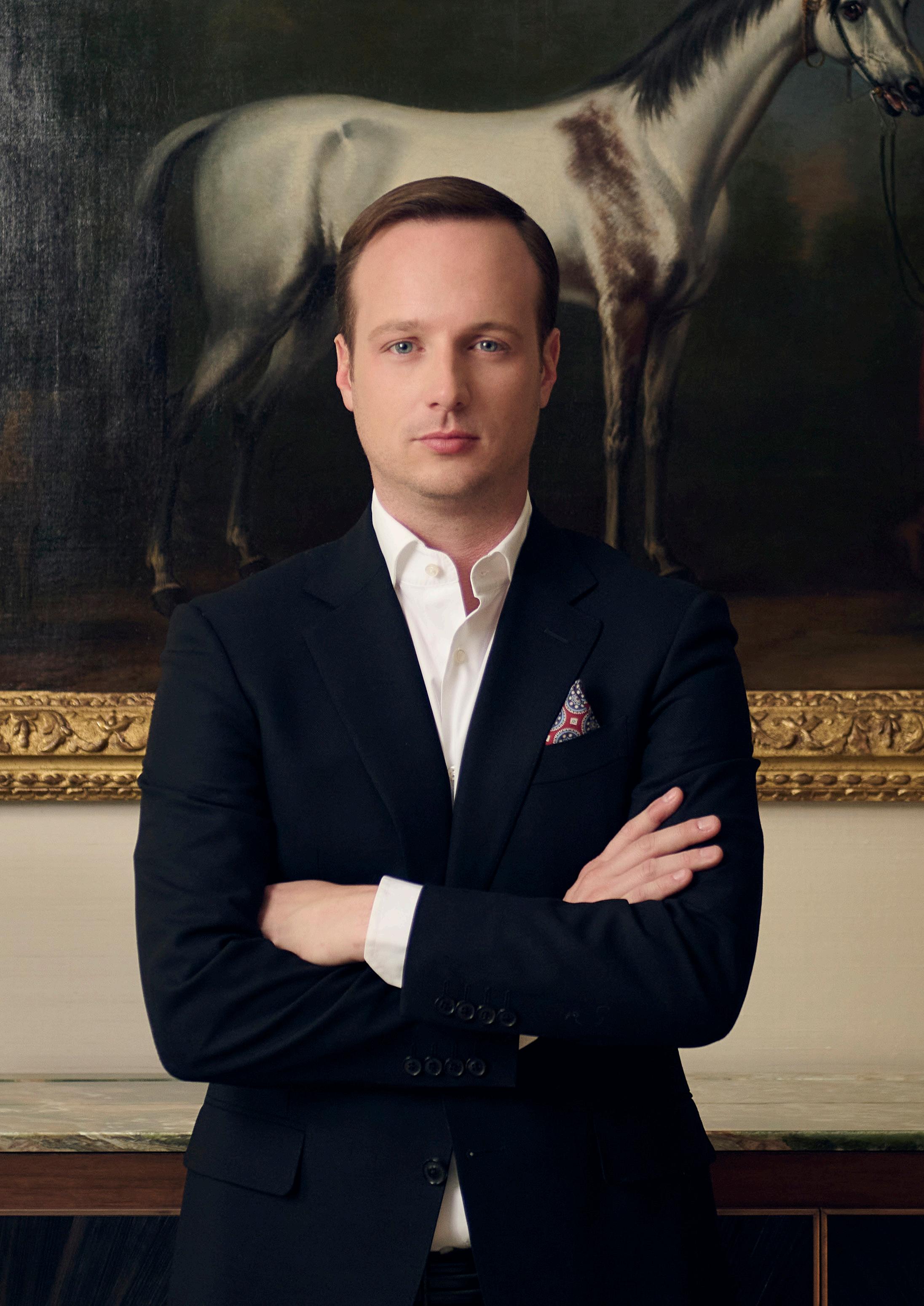
Founder and CEO at Unica Capital
Switzerland's most influential real estate entrepreneur discusses transforming Europe's ultra-prime property market in this exclusive conversation with The Executive Magazine. Byron Baciocchi reveals how he built Unica Capital's £630 million portfolio and shares strategic insights on identifying off-market opportunities, executing record-breaking deals, and why his diverse passions enhance his business acumen in this exclusive interview
FFew names in European real estate command the influence, discretion, and vision of Byron Baciocchi. A Monaco-based Swiss entrepreneur and billionaire investor, Byron is the Founder and CEO of Unica Capital—a specialist real estate investment and development firm reshaping the landscape of ultra-prime property across the UK and Europe. With two decades of experience, he has built a reputation for identifying, financing, and transforming high-value assets into fully serviced, designled residences tailored to the world’s most discerning clientele.
Before launching Unica Capital in 2021, he co-founded the acclaimed Ultima Capital, where he was instrumental in redefining luxury living through high-end, hospitality-driven developments across Europe. Ultima Capital SA was listed on the BX Swiss stock exchange in August 2019. In November 2023, Byron agreed to sell his stake in the company to a Luxembourg-based investment group, in a deal valued at over $1.4 billion.
Since its inception, Unica Capital has rapidly emerged as a major force in premium property investment. Operating across London, Switzerland, and Luxembourg, the firm currently manages a growing portfolio valued at £630 million. Backed by a team with over £6 billion in investment experience, the organisation focuses on delivering superior returns through a curated, strategic approach to real estate and alternative investments.
From statement properties in Geneva and London to exclusive developments in Gstaad and Monaco, Byron’s vision is rooted in financial intelligence and an intuitive sense of place. As the company continues its expansion into Europe’s most sought-after markets, Byron Baciocchi stands at the forefront of a new era in ultra-prime real estate, one defined by elegance, innovation, and lasting value.
You’ve built an impressive portfolio valued at £630 million with Unica Capital since its founding in late 2021. What factors contributed to such rapid growth in the competitive real estate investment sector?
“The growth of Unica Capital has been underpinned by decades of industry insight and a network of trusted relationships built over time. Our experience gives us the ability to identify rare, off-market opportunities –projects that are often invisible to the wider market. We move with intent: we are decisive, strategic, and value-led, always guided by quality of location, design potential, and long-term sustainability.
“A key advantage lies in our ability to unlock value where others may not look, distressed assets with untapped potential.”
Before Unica Capital, you co-founded Ultima Capital and transformed Sport Hotel Rütti into the luxurious Ultima Gstaad. How did this early venture shape your approach to blending traditional architecture with modern luxury?
“Ultima Gstaad was a deeply personal project. I’d spent years travelling and staying in top-tier properties, but I always felt something was missing. That project became an expression of what I felt luxury hospitality should be – emotionally engaging, highly personalised, and beautifully localised. Rather than impose a style, we respected Gstaad’s traditions and heritage and layered in modern comfort and innovation. That balance – of old and new, authenticity and innovation -continues to inform everything we do at Unica.”
“True
Byron Baciocchi

Your current projects include what will become the world’s largest chalet in Gstaad at 5,500 square metres. What unique challenges arise when developing properties of this scale and exclusivity?
“With a project of this magnitude, the challenge isn’t scale –it’s intimacy. Every detail must feel curated and cohesive, with nothing left to chance. You have to create a sense of soul, of personality, even within vast spaces. It’s about architecture that’s not just impressive, but emotionally resonant. We aim to create environments that feel grand and deeply human—where every element, no matter how large or small, serves a purpose.”
The record property sale in Gstaad reached an unprecedented £93,000 per square metre. How do you identify locations with such extraordinary investment potential?
“True investment insight often comes from an emotional connection to place. Gstaad has been part of my life since childhood, and that familiarity allows me to read between the lines of a market. It’s not about numbers on paper. It’s about understanding the cultural, social, and even seasonal nuances that drive long-term value. These deals aren’t found on the open market; they come through trust, timing, and the discretion of long-standing relationships. That’s where Unica Capital thrives.”
Your restoration of Le Grand Jardin on Île Sainte-Marguerite demonstrates a commitment to preserving historical architecture. How do you balance heritage preservation with modern luxury requirements?
“At the heart of every heritage project is respect – respect for the past, the environment, and the cultural legacy of a property. With Le Grand Jardin, our ambition was not to transform but to elevate, using craftsmanship and materials that enhance rather than overshadow. Luxury today is about discretion and meaning, so we integrate modern conveniences seamlessly, ensuring that the soul of the property remains untouched while still meeting the expectations of a contemporary lifestyle.”
Beyond real estate, you’ve established L’Ecurie Suisse for breeding Arabian horses and are competing in the 2024 GT Winter Series. How do these personal passions influence your business perspective?
“Whether it’s motorsport or horse breeding, these passions demand discipline, precision, and long-term thinking, the same principles I apply to real estate. Breeding Arabian horses, for example, requires an understanding of heritage, genetics, and care, much like assembling a timeless property portfolio. Motorsport, on the other hand, sharpens your focus and decisionmaking under pressure. Both fuel a mindset of excellence and resilience, which I bring into the business every day.”
Having started your entrepreneurial journey at a young age, what advice would you offer to both emerging and seasoned business leaders in today’s luxury real estate market?
“Be patient and stay focused on substance over speed. Surround yourself with people who challenge you and elevate your thinking. Build trust, not just contacts, and never compromise on detail, because in the luxury space, details are everything. Most importantly, believe in your vision and execute with conviction.”
Looking ahead, what emerging trends do you anticipate will reshape luxury real estate investment, and how is Unica Capital positioning itself to lead in this evolution?
“Luxury real estate is no longer just about aesthetics, it’s about purpose. Buyers today want privacy, wellness, smart living, and environmental consideration built in as standard. At Unica Capital, we’re responding by developing turnkey residences that offer complete lifestyle solutions: integrated wellness spaces, intuitive technology, and sustainable materials, all while remaining sensitive to the character and story of each location. This is the future of luxury: thoughtful, refined, and human centric.”

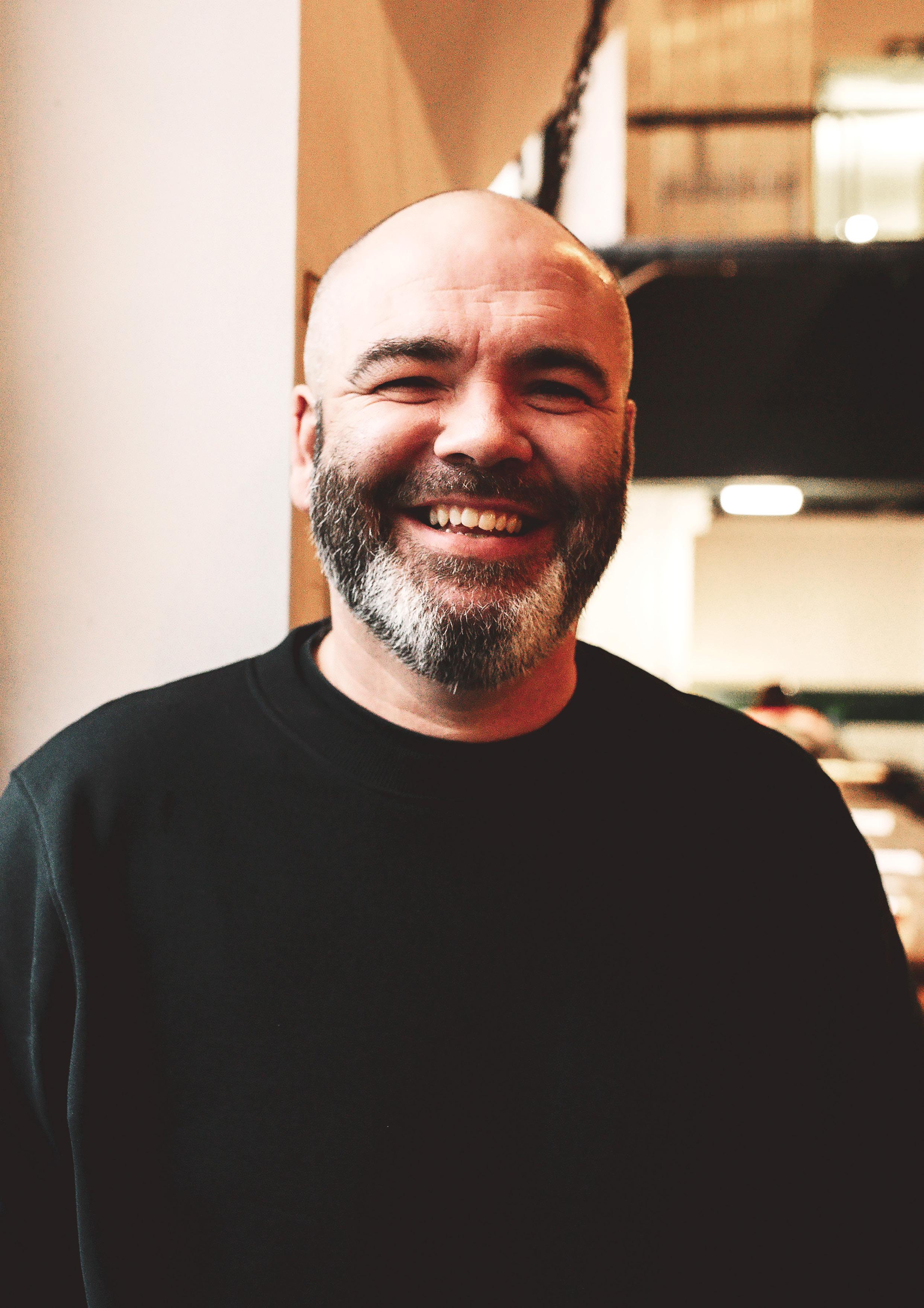
Ed Ferris, multi-sector investor and chairman of Hip Pop, shares exclusive insights with The Executive Magazine on scaling businesses from family enterprise to £100m operations, his strategic transition into portfolio leadership across ten diverse ventures, and the fundamental principles that drive transformational growth in today's rapidly evolving business landscape
EEd Ferris represents a new generation of business leaders who have successfully navigated the transition from traditional enterprise management to strategic portfolio oversight across multiple sectors. As chairman of Hip Pop, the UK’s fastest-growing carbonated drinks brand in 2024, and investoradvisor to ventures spanning food sustainability, disability support, and emerging technologies, Ferris has established himself as a catalyst for transformational business growth. His journey from inheriting the family jewellery business at 23 to scaling it into a £100 million operation recognised as the UK’s second fastest-growing midmarket company demonstrates the strategic acumen that now drives his diverse investment portfolio.
In this exclusive interview with The Executive Magazine, Ferris reveals the methodologies behind his remarkable business transformations and the evolution of his leadership philosophy from single-enterprise focus to multi-sector influence. His current ventures include revolutionary food sustainability technology through Fermtech, which reduces CO2 emissions by 98% in cocoa alternatives, and community-building initiatives that support underrepresented entrepreneurs through May Contain Nuts. From his role as chair of The Pinder Trust supporting disability access to aquatic physiotherapy, to co-founding The Impact Apothecary as an “anti-agency” for purpose-driven businesses, Ferris demonstrates how experienced leaders can leverage their expertise to drive meaningful change across industries while building commercially successful enterprises that address contemporary market challenges.
You transformed your family’s jewellery business from a £6 million operation with five shops into a £100 million enterprise. What fundamental strategic decisions enabled this extraordinary growth trajectory, and how did you maintain operational excellence whilst scaling at such velocity?
“We had been preparing for growth for 3-4 years prior, partly due to a couple of acquisitions we’d decided to back out of back in 2005 and 2007, so were financially ready for something big. We had also started to work on operating the business differently from a leadership perspective, with me stepping back from the dayto-day running to work on other things – it meant the business wasn’t so reliant on me when the time came to go fast. When everything started exploding, we put a director solely focused on our core existing business, and this allowed us to concentrate on the madness of scaling without neglecting what we already had.
“Operational excellence came in fits and starts though. Our key period was Christmas, where we could make 35% of our profits in one month, and over the first two Christmasses we made huge strides by putting key people into the main functions to constantly review and improve what we were doing. We made a lot of mistakes, but the opportunities were coming so fast, and I think in any type of explosive growth things don’t necessarily happen in the right order. The key seemed to be documenting what’s wrong and putting it on a list of things to fix when you have time to breathe! What I found to be crucial was communication from me – constantly talking to the company about what was happening, and my being present and visible.”
After successfully exiting the jewellery sector in 2021, you attempted retirement but found yourself drawn back into business within twelve months. What compelled this return, and how has your approach to leadership evolved from running a single enterprise to chairing and investing across multiple sectors simultaneously?
“I felt like I’d lost purpose – playing three rounds of golf during the week is not as fulfilling as I’d hoped.. The main catalyst for my return came from meeting Emma & Kenny, the founders of Hip Pop. We met on LinkedIn when they were raising money; I invested in them and their dream, and after supporting them from afar for 12 months they asked me to chair their business, and I felt part of something again.
“I had a love affair with my own businesses and one day that disappeared, and I never thought I would feel that again. I was wrong. Today I work with and support a number of businesses and have even ventured back into building some of my own. I find that not being involved in the day-to-day of a business allows me to see with better clarity and observe what is happening and guide things. I think many different businesses have very similar challenges – I cut my teeth in jewellery retail but so much of what I learnt applies to almost any business.”
Your current portfolio spans carbonated beverages with Hip Pop, disability support through The Pinder Trust, and food sustainability via Fermtech’s revolutionary cocoa alternatives that reduce CO2 emissions by 98%. How do you identify investment opportunities across such diverse sectors, and what common threads connect these seemingly disparate ventures?
“The fundamentals for any business are often very similar. I may not have deep knowledge of a certain sector, but there are always people out there who do, and you just need to know how to communicate with and listen to them. What you can’t do is assess the leadership, vision, character, business plan and product quality without spending time with the people doing it.
“I spend a lot of time now going through what I call a dating process. I want to know who I am investing in; hang out together, listen, observe them in action and in real life. When it feels right, I feel like I’m ready to actually sit down right next to them on the sofa, and often that’s literally what I do. If you’re going to do something together and hopefully scale something together, you are inevitably going to get very close at times, and if it all feels right, that’s a huge advantage.”
Hip Pop achieved recognition as the UK’s fastest-growing carbonated drinks brand in 2024, securing distribution through major retailers including Sainsbury’s, Waitrose, and Harrods. What market dynamics did you identify in the beverages sector that convinced you to enter this highly competitive space, and how does your retail background inform your approach to brand building?
“I suffer from gut health issues, so it was a personal thing for me. I wasn’t drinking alcohol at the time and was fed up with the usual sugary drinks, fake alcohol, and drinks full of artificial sweeteners. I quickly found that there were a lot of people in the same situation as me. Interest in functional drinks was already high, so it seemed meant to be. As a jewellery retailer we’d been obsessed with attracting people to our windows, getting the key products in front of their eyes, and selling in the drinks
environment is very similar.”
The formation of May Contain Nuts specifically targets underrepresented backgrounds in the food and drink industry, whilst The Impact Apothecary positions itself as an “antiagency.” What market gaps prompted these unconventional business models, and how do they reflect broader shifts in how purpose-driven enterprises operate?
“Many businesses are lucky enough to have access to capital early on in their journey, but what drew me to Hip Pop was how it had been built with no silver spoon or black book. Emma and Kenny grafted and broke through a very difficult barrier, and it has been nothing short of remarkable. I am drawn to people like this and feel a responsibility (after my own privileged start) to help support businesses doing the same thing.
“Working with a lot of businesses you do see a fair few things, and some which stand out for me are: a lack of clarity internally as to what the company’s ‘Why?’ is, not knowing where it is heading and how, and money being spent on external but not on the team. I feel this is where a lot of businesses need support. When it comes to purpose, the world is shifting very fast, and a lot of established businesses are facing big shifts in their sectors. After the drain of Covid lockdowns, people lost sight of what excites them about their business. I want to help people find that purpose again. Sometimes that’s a small shift, but for others it is almost like starting again.”
Your transition from operating franchise partnerships with international brands like Pandora and Diamonfire to now chairing independent ventures represents a significant strategic pivot. What lessons from managing franchise relationships inform your current approach to scaling UK-based brands, and where do you see the greatest opportunities for British businesses in international markets?
“We had 30 years of being a business built from scratch before we worked with brands. We spent a long time carving our own path, and a lot of these businesses fit that same mould. The big pivot for me was to not be involved 100% in one thing. I have done that and got the t-shirt, as they say, but now I crave variety. I want to learn new things, share my experience with new people; I want my world to be as big as possible.
“AI is clearly a strong driver of investment especially in the States and Middle East, there is already a brain drain leaving the UK to follow this path. The UK has a great service sector, one that is going to change beyond all recognition in the next 10 years, now is a time for those decades of experience to be enhanced through AI and taken to the wider world.”
The Bureau Club and The Pump House demonstrate your commitment to fostering business community infrastructure. Given your experience scaling from a single shop to nearly 1000 employees, what critical support mechanisms do you believe emerging business leaders lack, and how do these ventures address those deficiencies?
“Community and network are fundamental for any business today. Building your own is ideal, but for a lot of us that is a long journey. We build communities beyond the sales floor for leaders and
owners to connect on a friendship level. I’m a big fan and member of Jamie Stewart’s – Circle Networks business. What we do in The Bureau Club is have fun together – we go and do cool things and then we get to know about our members’ business plans and gaps. We work with them to widen their networks of customers, suppliers, investors, and mentors. We provide an additional sales support for your business that creates a strong partnership.”
Fermtech’s innovation in transforming spent grains through fermentation to create cocoa alternatives addresses both the global cocoa crisis and sustainability imperatives. How do you evaluate the commercial viability of breakthrough technologies that tackle systemic industry challenges, and what role should established business leaders play in supporting such innovations?
“Listening to the advisors and experts in the field to see what the obtainable market is, figure out the journey the business will have to go on to get there, and what their route to market is. Often with technologies like this there are some amazing brains building the technologies or developing the scientific knowledge, but they also need the practical knowledge to take that business on a journey to (in some cases) huge scale. I would urge any leaders out there today to offer their time to mentor and support some of these incredible people.”
Your portfolio includes ventures ranging from social basketball venues with Hoops Social to military teamwear through Keep Attacking, founded by decorated soldier Brian Wood MC. What criteria guide your investment decisions across such varied sectors, and how do you balance risk management with the pursuit of transformational opportunities?
“I generally don’t make purely cash investments now – after a while you must stop and wait to see how good your process of assessment is. Nowadays I look at opportunities and ask myself if I can add value, and if I want to go on the journey with them. It’s time consuming but slowing down and asking these simple honest questions of myself tends to yield good results.”
Reflecting on your journey from taking over the family business at 23 to now operating as a multi-sector investor and chair, what fundamental qualities distinguish successful leaders who can operate effectively across different industries, and what advice would you offer to executives contemplating similar portfolio careers?
“Good leaders come in many forms and characters – there is a great book by Fred Kiel called Return On Character, I can’t explain it any better than him. With regards to being able to operate across industries.. I would say that if you are secure and clear on what your strengths and experiences are, you’re halfway there. Ditch the ego; a good leader is essentially a servant. You’ll never know everything, but you can fill most gaps at least a little by finding, listening to, and trusting good people; using your network to grow your knowledge.”
Introducing a new initiative designed to foster gender equity and inclusion by bridging the gap between businesses and schools, Dee Gallagher of Amp Corporate Communications, which is spearheading the programme, explains in this exclusive contribution for The Executive Magazine why urgent action is needed and how companies can get involved to make change happen


Gender parity remains a persistent challenge in the workplace today, despite the measures that have been introduced to help address this. The latest UK statistics show that in 2025, nearly eight out of 10 businesses (78%) are paying men more than women – the same figure as in 2018.
Some sectors are more affected than others, for a variety of reasons, and of course there are companies that have bucked the trend and made huge strides. Measures such as pay gap reporting have helped, with the publishing of annual data a requirement for UK businesses with over 250 employees.
However, the imbalance persists. For long-term, sustainable change, it’s essential to look at the underlying causes and take a grass roots approach by looking ahead. With artificial intelligence (AI), the digital skills gap and the disparity of girls taking STEM subjects (science, technology, engineering and maths), this gap looks set to widen without imminent action.
Current estimates are that it will take 40 years to achieve gender parity – a bleak prospect when we think of what that means for schoolchildren today. So the question is, are businesses doing enough?
Simply by being part of the Future Talent Alliance, companies have a platform to take positive, strategic action to foster equality and inclusion. By forming connections with schools, businesses can help shape early conceptions of the workplace and provide vital role models, supporting social mobility, inclusion and gender parity, as well as investing in the long-term health and diversity of the UK talent pipeline.
The programme will launch with the inaugural conference on Friday 4 July at Alliance Manchester Business School. We’re looking forward to welcoming some great speakers and hosting a series of panel discussions on topics including:
• The digital and AI revolution: understanding the gender impact
• Sector spotlights on finance, tech, construction and education
• How to change perceptions and the need for role models
• Getting involved: new resources for schools
Participating businesses can join the debate and help shape the resource pack which will go into schools from September. There are different levels of involvement available, including partner, sponsor or advocate, so that companies can choose the level of involvement that’s right for them.
The resource pack itself will be aimed at Year 8 students, aged 12 to 13 years old, who are at the critical pre-GCSE decision-making stage. Multiple studies have shown that exposure to visible role models and early understanding of different career paths can be transformative, opening minds to sectors and possibilities that students (particularly girls) may not have previously considered. This helps to shape aspirations and build a more inclusive workforce from the ground up.
Businesses that register can also be part of the Future Talent Fortnight in November, when there will be various opportunities for businesses to engage with schools; ranging from workplace visits (real or virtual), providing mentors and speakers, online quizzes and much more.
By being part of this initiative, brands not only support social mobility and gender equality but also invest in the long-term health and diversity of the UK talent pipeline.
The benefits to businesses are manifold. From increasing brand awareness and supporting both recruitment and retention to building loyalty and driving sales.
Working together with our sister agency at Spice PR we deliver a full range of brand and digital marketing services. In one recent campaign to boost gender equity and inclusion, we saw results of a fivefold increase in sales, alongside extensive media coverage and social media engagement.
The way consumers think about brands has changed. Amp’s own research has shown the importance of taking a holistic approach to your brand strategy. When it comes to gender equity and inclusion, this is about more than social responsibility, it’s a strategic imperative.
Get involved
For more details on the Future Talent Alliance and to sign up, visit ampcomms.co.uk/future-talent-alliance


The journey to net zero has evolved from environmental aspiration to the defining commercial imperative of our time. As we advance through 2025, British businesses are demonstrating that carbon neutrality represents not just an obligation to future generations, but a fundamental driver of innovation, competitive advantage, and long-term value creation. This special section examines how UK enterprises are rewriting business rules through bold climate action.
Our coverage begins with Dr. Rich Stockdale's ground-breaking analysis of how nature is becoming a tradeable asset class, attracting investments from BlackRock and Microsoft. Through his work at Oxygen Conservation and partnerships with Dixon Foundation and Burges Salmon, premium carbon credits are creating direct investments in ecosystem restoration.
Royal Mail's pioneering electric truck trial showcases traditional industry decarbonisation without compromising operational excellence. Under Fleet Innovation and Environment Manager Anna Pearson, their collaboration with Magtec and support from an £800,000 Innovate UK grant demonstrates practical pathways to net zero. CTO Marcus Jenkins at Magtec exemplifies how homegrown innovation drives sustainable transformation.
Shell's immersion cooling technology, certified by Intel and championed by Global Executive Vice President Jason Wong, offers dramatic efficiency improvements reducing energy consumption by up to 48%. This breakthrough, validated through testing with Intel's Corporate Vice President Karin Eibschitz Segal, addresses the projected doubling of global data centre energy demand by 2030.
The University of Aberdeen's leadership in NHS net zero initiatives demonstrates public sector transformation. Under Research Fellow Dr. Luis Loria-Rebolledo and Hub Director Ed Wilson at the University of Exeter, this £6.5 million government-funded collaboration shows how complex institutions can achieve dramatic emissions reductions while maintaining care standards.
Aviation's revolution emerges through OXCCU's work at Oxford Airport, where CEO Andrew Symes and co-founder Dr. Tiancun Xiao developed single-step synthesis technology. Backed by Aramco Ventures and investors including United Airlines, Eni, and Trafigura, their OX1 machine converts carbon dioxide directly into sustainable aviation fuel.
Government strategy unfolds through comprehensive policy measures led by Climate Minister Kerry McCarthy, Nature Minister Mary Creagh, and Baroness Minette Batters overseeing agricultural transformation. With John Fingleton CBE leading the Nuclear Taskforce and Dan Corry's environmental regulatory review, policy frameworks enable private sector innovation.
The UK's emergence as a global carbon credit trading leader promises markets worth £250 billion by 2050, with nature markets adding £69 billion. Mark Kenber from the Voluntary Carbon Markets Integrity Initiative and Onel Masardule from the Indigenous Peoples and Local Communities Engagement Forum provide insights into delivering genuine environmental benefits while driving economic growth.
Even business networking transforms through V1CE's revolutionary approach. Under Co-Founders Francis Falodun and Haydn Price, their NFC-enabled digital business cards have eliminated millions of paper cards.
These transformations occur within unprecedented government support: £20 million for fusion technology through Starmaker One, £45 million for agricultural innovation, and £300 million for Great British Energy's offshore wind supply chains.
The businesses and institutions embracing net zero as core strategy are positioning themselves at the forefront of the greatest economic transformation since the Industrial Revolution. The question is no longer whether to pursue net zero, but how quickly organisations can implement the innovations defining competitive advantage in a carbon-neutral economy.
The world's most fundamental resources are undergoing a dramatic financial transformation. Biodiversity, ecosystems, and natural infrastructure are shifting from environmental concerns to investable assets, attracting billions in capital from institutional investors worldwide. Major players from BlackRock to Microsoft are positioning themselves in this emerging sector, signalling a permanent change in how business approaches environmental stewardship. Dr Rich Stockdale offers his exclusive analysis for The Executive Magazine on this transformative shift

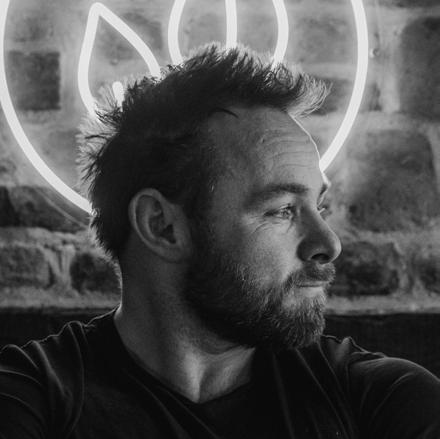
Nature is no longer a passive backdrop to economic activity but is becoming one of the most valuable asset classes on Earth.
The shift is already underway. Capital is flowing into nature-based solutions at an unprecedented speed – not just to offset carbon, but to invest in the foundational systems that sustain life and the economy. Investors are beginning to recognise that biodiversity, water, soil, and ecosystems aren’t peripheral concerns but are the essential infrastructure of a resilient, futurefacing economy. Nature is moving from the margins to the mainstream of global finance.
Climate change and biodiversity loss are not just parallel challenges; they are mutually reinforcing global crises. Attempting to solve one while neglecting the other undermines the integrity of environmental systems and creates compounding vulnerabilities across economic and societal infrastructures.
Siloing climate and biodiversity leads only to fragmented strategies that miss the full scope of interdependencies. As climate impacts accelerate, through extreme weather events, sea-level rise, and shifting ecological zones, the degradation of biodiversity reduces nature’s capacity to respond, adapt, and regenerate. Without robust biodiversity, climate mitigation and adaptation efforts begin to fail.
At Oxygen Conservation, our entire approach to land management is built on that premise: that environmental improvement encompasses carbon sequestration, habitat creation, ecological
restoration, renewable energy production, regenerative agriculture, sustainable built infrastructure, and community engagement. We don’t optimise for a single metric. We strive to enhance the whole landscape, delivering positive environmental and social outcomes and delivering profit as a result, not the purpose.
The development of carbon markets offers a useful—if imperfect— blueprint for how environmental goods such as natural capital products and services can be priced, traded, and integrated into financial systems. By assigning a monetary value to emissions reductions and removals, these markets have helped internalise the cost of carbon, mobilise private investment, and raise climate risk awareness across corporate governance.
At Oxygen Conservation, we believe the voluntary carbon market is now entering a crucial new phase defined by integrity, transparency, and tangible impact. That’s why we’ve entered into a landmark partnership valued at up to £1,000,000 GBP with leading independent UK law firm Burges Salmon. As part of the agreement, Burges Salmon will be the exclusive buyer of up to 8,000 premium-quality, UK-based carbon credits, which will be provided at £125 per tonne. This partnership is not just a transaction, but a statement of what carbon finance should be.
Furthering the charitable objectives of Dixon Foundation, the owner of the Leighon Estate, the funding directly supports one of our most ambitious nature restoration projects. Here, the partnership is supporting the regeneration of habitats, the restoration of species and strengthening long-term ecosystem health. It’s a clear example of how premium carbon credits can act as direct investments in biodiversity, bridging the gap between climate action and ecological recovery.

The trajectory of the carbon market shows that environmental value can be codified, monetised, and scaled. The StockdaleWinter Carbon Curve 2025 projects a premium price of £150 per tonne by 2030. Meanwhile, the 2025 EM Report notes that cumulative traded value in the voluntary carbon market reached $11.3 billion in 2024, with forecasts as high as $50 billion by 2030. This flow of capital is already transforming the landscape, funding restoration at scale and accelerating technologies that once seemed out of reach.
Momentum in the Market: Institutional and Corporate Leadership Major institutional players are already making bold moves that signal the mainstreaming of natural capital considerations. BlackRock and Blackstone have both begun integrating biodiversity and natural capital risk into their portfolio assessments, acknowledging the long-term material impacts of ecosystem decline. Meanwhile, Norges Bank Investment Management—the world’s largest sovereign wealth fund— has quietly acknowledged that nearly every dollar under its management is exposed to the single greatest repricing event in financial history – natural capital.
On the corporate front, Microsoft has recently set a historic precedent by purchasing more voluntary carbon credits in three months than ever recorded before. This surge reflects a growing appetite among leading companies to proactively invest in highintegrity, nature-based solutions.
These actions underscore a vital trend: the institutions and corporates that shape global capital flows are beginning to see nature not as charity, but as capital.
They’re not waiting for perfect regulation – they’re building the market alongside the incredible companies working in the natural capital sector.
Conclusion: The UK as a Global Leader in Natural Capital Markets
The United Kingdom holds a unique position in the global movement to develop natural capital markets. With a mature carbon market, pioneering biodiversity regulation, and a vibrant landscape of institutional innovation, the UK is well-placed to lead this transformation. If done well, the frameworks being pioneered in the UK could serve as blueprints for global markets, exporting not just regulation, but a new economic model where restoring nature generates real value.
Organisations like Credit Nature, Rebalance Earth, Restore, Nattergal and Oxygen Conservation are redefining what it means to invest in nature. They are professionalising the sector, building the infrastructure required for scale, and with the right blend of policy, investment, and innovation, the UK can help usher in a new era where economic success is inseparable from ecological resilience.
Dr. Rich Stockdale is a transformative leader and pioneering environmentalist on a mission to Scale Conservation. Armed with a PhD in data science, he combines relentless commitment with visionary thinking to redefine our relationship with the natural world. He founded Oxygen Conservation with Oxygen House in 2021 and has rapidly built one of the world’s most impactful natural capital portfolios, valued at hundreds of millions of pounds and actively transforming thousands of acres into thriving ecosystems for people and wildlife. Rich is determined to make natural capital a mainstream asset class, with the ambitious target of managing over £1 billion in assets by 2030, reshaping how the world values nature, and creating a positive impact on an incredible scale.
Rich is also the author of Scaling Conservation. Boldly pioneering how to break down barriers and turn nature restoration from an optional nicety to an economic necessity.

Corporate boardrooms have witnessed a fundamental shift as climate targets migrate from sustainability reports to strategic planning sessions. Environmental performance now influences brand perception, consumer loyalty, and competitive positioning across industries. Companies that once treated carbon neutrality as regulatory compliance now leverage it as a core differentiator, responding to stakeholder demands for authentic environmental accountability. This transformation reflects a broader evolution where sustainability credentials determine market success alongside traditional financial metrics
FFor much of the last decade, climate targets were tucked into the back pages of sustainability reports. Today, they occupy a front-row seat in boardroom discussions. Across sectors, carbon neutrality is no longer viewed as a compliance exercise but as a key driver. Investors, customers, and employees are aligning with companies that treat Net Zero not as a marketing message, but as a core business priority.
In terms of business, achieving Net Zero means balancing emissions with equivalent reductions or removals, resulting in no net impact on the climate. As environmental targets move to the forefront of corporate strategy, supply chains, materials, and manufacturing processes are being reassessed with carbon impact in mind.
As environmental impact is becoming an increasingly influential factor in purchasing decisions, a brand’s carbon footprint and its efforts to reduce is widely recognised as a sign of integrity and long-term value.
According to McKinsey, over 70% of consumers are willing to pay a premium for products from companies that show a clear commitment to sustainability. For brands operating at the higher end of the market, carbon performance is no longer peripheral, but central to maintaining consumer trust and competitive relevance.
Many hallmarks of luxury such as craftsmanship, longevity, and limited production, are inherently aligned with sustainability. These qualities provide a strong foundation for credible, measurable progress toward Net Zero.
Consumers are less interested in pledges and more so in progress. Brands that articulate their Net Zero journey with specificity through product life-cycle assessments, emissions audits, and independent verification, are more likely to earn credibility.
Carbon credentials should be woven into a brand’s core story, not just treated as a footnote. For example, fashion brands are detailing
the impact of each garment, tech companies are publishing emissions data per device, and automobile manufacturers are building entire campaigns around hybrid and electric vehicles.
The rise in sustainability claims has been accompanied by a rise in greenwashing, a marketing tactic where companies deceptively portray their products or services as more environmentally friendly than they actually are. It can involve making misleading claims or using green-themed marketing to give the impression of sustainability without genuinely making environmentally conscious changes.
Ironically, acknowledging its complexity can build more trust than portraying perfection. Brands that communicate the challenges of their Net Zero journey often appear more credible than those offering overly polished narratives.
Third-party certifications, adopting science-based targets, and aligning with standardised disclosure frameworks are all ways in which companies are providing transparency with their investors and customers.
Acknowledging the journey to Net Zero rather than claiming flawless implementation, is often viewed as the more trustworthy approach.
As the 2050 Net Zero target approaches, companies will be judged by the rigour and honesty of their environmental commitments. Financial performance still matters, but increasingly, it is complemented by the transparency and ambition of a company’s environmental commitments.
This is not about appeasement, it’s about aspiration, positioning sustainability as a driver of innovation, corporate responsibility, and long-term value.
Luxury, long defined by craftsmanship and exclusivity, is now incorporating sustainability. True prestige reflects not just what a brand creates, but what it preserves.

Shell has achieved a significant industry milestone with its immersion cooling fluids becoming the first to receive official certification from Intel. This breakthrough technology promises to transform data centre operations globally, offering substantial reductions in energy consumption and physical footprint
SShell’s immersion cooling fluids have secured a landmark achievement as the first to receive official certification from Intel, a major chip manufacturer. This development represents a significant advancement for sustainable data centre technology and sets a new benchmark for cooling solutions across the industry.
The formal certification follows a two-year collaborative effort between the companies, during which Intel conducted exhaustive testing to confirm that its Xeon processors perform reliably when submerged in Shell’s electrically non-conductive cooling fluids. This validation allows data centre operators worldwide to implement Shell’s innovative cooling solution with full confidence, providing a substantially more energy-efficient alternative to conventional air-cooling systems.
The advantages offered by Shell’s immersion cooling technology extend far beyond standard incremental improvements typical in the data centre sector. According to Jason Wong, Global Executive Vice President at Shell Lubricants, “Upgrading existing air-cooling methods with immersion fluids can reduce data centre energy use by up to 48%, as well as help reduce capital and operating expenditure by up to 33%.”
These figures highlight the transformative potential of the technology at a time when data centres face mounting pressure to reduce their environmental impact whilst managing escalating operational costs. The solution addresses both challenges simultaneously, offering a compelling business case for adoption.
Perhaps most striking among the benefits is the dramatic reduction in physical space requirements. The technology can decrease the floor space needed for a data centre by approximately 80%, creating opportunities for facilities in locations where space commands a premium or where expansion would otherwise be constrained.
The fundamental principle behind immersion cooling differs substantially from traditional approaches to thermal management in data centres. Rather than relying on air as the primary cooling medium, the technology utilises specialised liquids that possess
superior thermal properties.
These electrically non-conductive fluids make direct contact with computing components, absorbing and dissipating heat far more efficiently than air-based systems. This direct contact eliminates the need for numerous components that occupy space and consume energy in conventional cooling setups, including fans, chillers and bulky air handling infrastructure.
The elimination of these intermediary cooling systems contributes significantly to the technology’s efficiency advantages. Each component removed from the cooling chain represents one fewer point of energy consumption and potential failure, simplifying the overall system architecture while improving reliability.
Beyond the immediate energy and space savings, the solution offers additional operational benefits including reduced noise levels, decreased maintenance requirements, and potentially extended hardware lifespans due to more consistent operating temperatures and reduced thermal cycling.
The certification arrives at a critical juncture for the data centre industry. Global demand for data centre energy is projected to more than double by 2030, driven by artificial intelligence applications, cloud computing growth, and the expanding digital economy.
Karin Eibschitz Segal, corporate vice president at Intel, emphasised this timeliness: “We’re pleased to be partnering with Shell in accelerating the adoption of more sustainable and energy-efficient solutions for data centres. Through these advancements we’re paving the way for the next generation of high-performance, environmentally conscious computing.”
Shell’s certified immersion cooling fluids offer a scalable solution particularly suitable for retrofitting existing data centres, allowing facilities to accommodate growing computational demands without corresponding increases in energy consumption or physical expansion.
With data centres now accounting for approximately 1-2% of global electricity consumption—a figure anticipated to rise significantly—technologies that can decouple computational growth from energy demand will play an increasingly vital role in sustainable digital infrastructure development.

The University of Aberdeen has secured a pivotal role within a nationwide hub dedicated to reducing the carbon footprint of Britain's National Health Service. As part of a £6.5m government-funded initiative led by the University of Exeter, this collaborative effort aims to revolutionise healthcare sustainability practices while supporting the NHS's legal obligation to achieve net zero emissions by 2045

TThe University of Aberdeen has been selected as a core organisation in a ground-breaking nationwide hub tasked with developing innovative approaches to dramatically reduce the carbon footprint of the National Health Service. This prestigious appointment places the Scottish university at the forefront of environmental sustainability efforts within Britain’s healthcare system.
The initiative, led by the University of Exeter, has secured £6.5 million in government funding as part of a broader £42 million investment from UK Research and Innovation (UKRI) and the National Institute for Health and Care Research (NIHR). These organisations have established seven specialised hubs, each addressing unique net zero challenges facing various sectors.
The newly established health and social care pathways hub, officially titled ‘UK Hub for One Health Systems: Creating Sustainable Health and Social Care Pathways’, brings together an impressive coalition of university and healthcare partners throughout Britain. Their collective mission focuses on transforming the NHS into an environmentally sustainable organisation capable of meeting its legally mandated obligation to achieve net zero emissions by 2045.
While the NHS has demonstrated significant progress in reducing emissions directly under its control—projecting an 80% reduction from 1990 levels by 2030—other areas present escalating challenges. Carbon emissions have actually increased from travel, waste management, and supply chain operations involving pharmaceutical companies, medical device manufacturers, and suppliers of essential healthcare products.
Hub Director Ed Wilson, Professor of Health Economics and Health Policy at the University of Exeter, explained: “We’ll be examining patient journeys through the NHS and social care, identifying carbon hotspots and determining effective methods to neutralise them. This includes helping NHS suppliers—companies manufacturing drugs, medical devices and everyday items like swabs, sheets and hospital gowns—to redesign their processes for reduced carbon emissions.”
The University of Aberdeen team, led by Research Fellow Dr Luis Loria-Rebolledo, will spearhead a dedicated workstream focused on prioritising net zero strategies that simultaneously address diverse population needs, maximise environmental benefits, and reduce health inequalities.
“We are thrilled and inspired to participate in this interdisciplinary team, uniting experts from across Britain to achieve such a momentous goal,” stated Dr Loria-Rebolledo. “The project aligns perfectly with Aberdeen’s broader commitment to exploring sustainable solutions that challenge conventional approaches as we work toward our own net zero target before 2040.”
The influential consortium includes numerous prestigious organisations across the United Kingdom: Cornwall Partners NHS Foundation Trust; Glasgow Caledonian University; the Institute of Cancer Research, London; the James Hutton Institute; NHS Highland; Queen’s University Belfast; the Royal College of General Practitioners in Scotland; the Royal College of Surgeons in Ireland; the Royal Devon University NHS Foundation Trust; the University of Liverpool; the University of South Wales; Volunteer Cornwall; and Getting it Right First Time—an NHS England programme designed to enhance treatment quality and patient care.
This strategic partnership exemplifies how academic institutions and healthcare providers can collaborate effectively to address urgent environmental challenges while maintaining exceptional standards of patient care. By focusing on system-wide transformation rather than isolated improvements, the hub aims to create a template for sustainable healthcare delivery that could potentially influence similar initiatives globally.

Royal Mail has taken a significant stride toward its Net Zero ambitions with the introduction of its first electric trucks. This ground-breaking initiative, developed in partnership with Magtec, represents a crucial advancement in a sustainability strategy as it works to decarbonise its extensive national distribution network
RRoyal Mail’s integration of these cutting-edge 19-tonne electric trucks into its fleet marks a pivotal moment in the logistics sector’s transition to sustainable transport solutions. The trial demonstrates how established organisations can implement innovative technologies to reduce emissions without compromising operational capability.
The partnership between Royal Mail and UK-based electric vehicle specialist Magtec showcases the potential of homegrown technology to address climate challenges. Backed by an £800,000 grant from Innovate UK, the collaboration has brought two stateof-the-art electric trucks into service at Royal Mail’s Greenford Mail Centre in North West London.
These vehicles offer impressive performance metrics that make them suitable for real-world logistics operations. Each truck delivers a flexible range of up to 125 miles on a single charge while maintaining highway speeds of up to 56mph—specifications that meet the demands of urban and regional delivery routes. The operational capabilities make these vehicles practical alternatives to their diesel counterparts for many routes within Royal Mail’s network.
Magtec’s MEV190 model features advanced technology including a substantial 300kWh battery system, fast-charging capability, and a robust driveline powered by a 200kW electric motor. The company manufactures approximately 90% of components inhouse, reflecting three decades of electric vehicle innovation and ensuring quality control throughout the production process.
The electric truck trial forms a key component of Royal Mail’s comprehensive decarbonisation strategy. The organisation has set an ambitious target to achieve Net Zero carbon emissions by 2040, a full decade ahead of the UK’s national target.
Progress toward this goal has been substantial, with the postal service already achieving an 18% reduction in Scope 1 and 2 emissions over the past two years. This demonstrates the effectiveness of their multi-faceted approach to sustainability, which encompasses not only vehicle electrification but also improvements in energy efficiency across operations.
Anna Pearson, Fleet Innovation and Environment Manager at Royal Mail, emphasised the strategic importance of the trial: “This trial supports our Steps to Zero strategy and helps us explore how we can decarbonise our national distribution fleet of over 4,000 trucks.”
The trial provides an opportunity to gather crucial real-world performance data by comparing the electric vehicles with the existing fleet under identical operating conditions. This evidencebased approach ensures that future investments in electric vehicles will deliver maximum environmental benefits while
meeting operational requirements.
The introduction of electric trucks builds upon Royal Mail’s established position as a leader in sustainable delivery methods. The company already operates the largest electric delivery fleet in the UK, with significant ongoing expansion planned.
Current projections indicate that Royal Mail will have over 7,000 electric vans in service by July 2025. This rapid growth in electric vehicle adoption demonstrates the organisation’s commitment to sustainable practices across all aspects of its operations.
These smaller electric vehicles have already proven their effectiveness for last-mile delivery, with the new larger electric trucks addressing the more challenging middle-mile transport between sorting centres and local delivery offices. This comprehensive approach ensures emissions reductions throughout the logistics chain.
The success of this initiative highlights the value of collaboration between established organisations and technology specialists. Marcus Jenkins, CTO at Magtec, noted the broader implications of the project: “This collaboration demonstrates how British EV technology can support the decarbonisation goals of major fleet operators like Royal Mail.”
Such partnerships accelerate the development and deployment of sustainable technologies by combining operational expertise with technical innovation. Royal Mail brings decades of logistics experience and a clear understanding of practical requirements, while Magtec contributes specialist knowledge in electric vehicle systems.
The £800,000 grant from Innovate UK further illustrates how public funding can catalyse private sector sustainability initiatives. This financial support has facilitated the development and deployment of vehicles that might otherwise have faced economic barriers to adoption at this early stage of technology maturity.
As the trial progresses, Royal Mail will gather valuable data on vehicle performance, charging requirements, and operational considerations. This information will inform future procurement decisions and help optimise the integration of electric vehicles into their extensive logistics network.
The visible presence of these distinctive red electric trucks on UK roads serves as a powerful demonstration of sustainable transport possibilities. Their deployment by a trusted national institution like Royal Mail may help accelerate broader market acceptance of electric heavy goods vehicles.
For the logistics sector as a whole, this initiative provides a practical example of how large fleet operators can begin the transition to zero-emission vehicles. The lessons learned from Royal Mail’s experience will likely influence industry practices and potentially shape regulatory approaches to transport decarbonisation.

A ground-breaking technology developed by Oxford University spinoff OXCCU promises to transform aviation sustainability through innovative fuel synthesis. Backed by Aramco Ventures, this pioneering system converts carbon dioxide and hydrogen into SAF using a revolutionary process, which could prove vital to meeting the net-zero challenge
WWhat appears to be an ordinary shipping container at Oxford Airport actually houses a remarkable technological breakthrough that could reshape aviation’s environmental footprint.
The OX1 machine represents years of dedicated research into sustainable aviation fuel (SAF) production, converting carbon dioxide and hydrogen into liquid fuel through an innovative process.
Operational since September 2024, this demonstrator currently produces 1kg of liquid fuel daily. OXCCU has established a clear development roadmap, with plans for a larger demonstration plant at Oxford Airport next year, followed by a full commercial facility. The technology aims to significantly contribute to the aviation sector’s challenging mission of achieving net-zero carbon emissions from operations by 2050.
The Oxford-based startup has secured impressive financial backing, with Aramco Ventures becoming a key investor in 2023. Other notable investors include United Airlines, Eni, and Trafigura, representing strong industry confidence across both aviation and energy sectors.
The core innovation behind OXCCU’s approach lies in its catalystdriven process that converts captured CO2 and hydrogen directly into SAF in one seamless step. This represents a significant departure from traditional methods that require multiple conversion stages.
Andrew Symes, CEO and co-founder of OXCCU, explains the fundamental advantage: “What we have is a simplification of existing routes to make sustainable aviation fuel, which enables a lower cost plant and a lower operating cost process.” Symes brings valuable perspective to the venture, having studied chemistry at Oxford before gaining experience in commodity trading and venture capital.
The technological breakthrough builds upon the historic FischerTropsch chemical process but incorporates a ground-breaking catalyst developed by fellow co-founder Dr. Tiancun Xiao. “Tiancun published a paper in 2020 that generated worldwide media coverage and which essentially showed for the first time [in the laboratory] that you could go from CO2 and hydrogen directly to the jet fuel range hydrocarbons with one catalyst in a single step – avoiding the need to make intermediates such as carbon monoxide or methanol,” Symes notes.
This innovation tackles a critical obstacle: the traditionally high cost of synthesising sustainable aviation fuels. By eliminating the need for intermediate compounds, OXCCU’s method requires less hydrogen input per unit of jet fuel produced. This efficiency translates to reduced capital and operating costs, potentially yielding a more economical Power-to-Liquid (PtL) SAF.
The aviation sector faces perhaps one of the most demanding
decarbonisation journeys of any industry. With air traffic volumes steadily increasing and projections indicating continued growth, the challenge of reducing carbon emissions becomes particularly acute. Traditional aviation fuels account for substantial greenhouse gas emissions, placing pressure on the industry to find viable alternatives.
According to the International Air Transport Association (IATA), sustainable aviation fuels must deliver approximately 65% of total emissions reductions to reach the industry’s ambitious 2050 netzero emissions target. This figure underscores the monumental role SAF must play in aviation’s environmental strategy.
The complexity of this challenge stems partially from aviation’s unique energy requirements. Aircraft demand fuel with exceptionally high energy density, specific combustion properties, and rigorous safety standards—characteristics that conventional renewable fuels often struggle to match. OXCCU’s approach specifically addresses these demanding criteria while maintaining compatibility with existing aircraft and infrastructure.
Policy frameworks worldwide have begun establishing concrete targets for SAF adoption. The European Union’s ReFuelEU initiative, for example, mandates increasing percentages of SAF blending over coming decades. Similar regulatory environments are developing globally, creating both compliance requirements and market opportunities for technologies like OXCCU’s.
Market demand for SAF will likely develop through multiple channels. Government mandates requiring sustainable fuel adoption will create regulatory demand, while voluntary uptake by private jet operators will establish market-driven consumption. Symes observes: “We will probably see the emergence of markets where SAF is mandated and we may also see voluntary demand that could also be facilitated by the airlines and fuel suppliers, driven by corporates choosing to buy SAF to offset their Scope 3 emissions.”
Current SAF production relies heavily on limited feedstocks like used cooking oil and agricultural waste. This constraint has directed attention toward emerging technologies capable of meeting projected demand growth through alternative production methods.
The OX1 demonstrator marks a crucial step in proving the technology’s feasibility at increasingly commercial scales. OXCCU envisions integrating their systems with industrial facilities to utilise point source carbon dioxide emissions, creating a circular approach to carbon management.
“The ultimate goal is to have a plant in operation with our technology by the end of the decade,” states Symes, outlining a clear timeline for commercial implementation. This ambitious yet measured approach reflects the practical challenges of scaling novel fuel production technologies.
The investment from Aramco Ventures fits within a broader portfolio strategy supporting innovations across energy and mobility sectors. Such financial backing provides essential resources for navigating the complex pathway from laboratory breakthrough to commercial deployment.
The British government has unveiled a comprehensive suite of policy measures aimed at advancing net zero targets, environmental sustainability and clean energy objectives. From significant investments in agricultural innovation and fusion technology to regulatory reforms and carbon capture initiatives, these strategic actions reflect a concerted effort to balance economic growth with decarbonisation goals

TThe current administration has demonstrated its commitment to environmental stewardship through several key initiatives. A nationwide prohibition on single-use vapes, scheduled to take effect on 1 June 2025, represents a decisive step towards reducing environmental waste. Retailers have been advised to deplete existing stock before the implementation date. This measure forms part of a broader strategy to address environmental pollution while simultaneously tackling the growing concern of vaping amongst young people.
Regulatory simplification has emerged as another priority area, with the government introducing reforms to environmental regulations. A comprehensive review led by Dan Corry has yielded 29 recommendations focused on streamlining processes without compromising environmental protections. The administration has emphasised that these changes aim to support both economic growth and nature conservation, explicitly ruling out large-scale deregulation.
The agricultural sector stands to benefit from significant governmental attention, with Baroness Minette Batters appointed to spearhead a review on farm profitability. This assessment will examine methods to enhance financial resilience across diverse farming sectors, incorporating valuable input from farmers and relevant stakeholders to ensure practical and effective outcomes.
A substantial £45 million investment package has been allocated to agricultural innovation, supporting ground-breaking technologies such as robotic fruit pickers and sophisticated irrigation systems.
These innovations aim to simultaneously boost food production efficiency while safeguarding environmental resources, striking a crucial balance between productivity and sustainability.
Climate adaptation has received focused attention through the release of the Climate Adaptation Research and Innovation Framework (CARIF). This strategic document identifies critical research gaps and will guide future funding allocations and collaborative efforts in preparing the UK for climate change impacts. The framework establishes clear priorities for research investment, ensuring resources are directed towards the most pressing adaptation challenges.
Environmental enforcement measures have been strengthened considerably, with local authorities granted enhanced powers to seize and destroy vehicles involved in illegal waste dumping. The government has also implemented procedural improvements to ensure offenders bear the financial burden of vehicle seizure, creating a stronger deterrent against fly-tipping while alleviating the cost burden on local communities.
The clean energy sector has seen substantial financial commitments, with the government investing £20 million in Starmaker One, a UK fusion investment fund. This strategic allocation is expected to leverage over £100 million into the fusion sector, marking the first government-public venture partnership of its kind and supporting employment opportunities alongside clean growth objectives.
Twenty-seven hydrogen projects have been shortlisted to drive clean energy adoption across UK manufacturing and power

sectors. This initiative will support industrial decarbonisation efforts while creating thousands of clean energy jobs, building capacity in a sector crucial for future energy security.
Workforce development has emerged as a critical focus area, with the government collaborating with industry partners to train skilled professionals in clean energy. Regional skills pilots across various locations will create apprenticeship opportunities and ensure the workforce can meet ambitious net zero targets by 2030, addressing potential skills gaps proactively.
John Fingleton CBE has been appointed to lead the Nuclear Taskforce, with responsibilities centred on accelerating regulatory reforms and developing new nuclear power stations. This appointment underscores the administration’s commitment to advancing nuclear energy as a component of its clean energy strategy.
Grid connection processes have undergone significant reform, with Ofgem implementing a new approach that prioritises clean energy projects. These changes are projected to unlock approximately £40 billion in private investment while expediting infrastructure delivery, removing a key bottleneck in renewable energy deployment.
The government has taken steps to position UK firms as leaders in global carbon credit markets, establishing the country as a hub for green finance and creating new funding streams for climate action. This initiative aligns with broader efforts to enhance the UK’s competitive position in emerging green financial markets.
An amendment to the Great British Energy Bill will ensure the public energy company adheres to ethical standards in its supply chains, explicitly excluding forced labour and promoting responsible investment practices. This measure reflects growing awareness of social responsibility dimensions within environmental policy.
The Prime Minister has announced a £300 million investment for Great British Energy to drive development in offshore wind supply chains, securing employment opportunities and attracting global investment in the renewable energy sector. This substantial commitment aims to strengthen domestic manufacturing capacity for renewable energy components.
Parliamentary scrutiny remains robust, with the Energy Security and Net Zero Committee investigating workforce gaps in green energy sectors, particularly in retrofitting and energy infrastructure. The committee is exploring funding options for worker training and reskilling programmes essential for meeting clean energy objectives.
The Environmental Audit Committee has sought clarification from the Environment Secretary regarding the government’s approach to balancing environmental protections with economic growth. Particular attention has been directed towards air quality measures and biodiversity targets, reflecting ongoing tensions between development and conservation priorities.
All-Party Parliamentary Groups continue to drive important discussions, with the Environment APPG hosting a briefing with the Climate Change Committee on adaptation progress. The Net Zero APPG has focused on transport decarbonisation, exploring practical and political reforms needed to achieve the government’s target of reducing transport emissions by 81% by 2035.

The British government has unveiled plans to establish the UK as a global hub for green finance by strengthening voluntary carbon and nature markets. New frameworks aim to boost business confidence in carbon credit trading, potentially unlocking markets worth hundreds of billions by 2050. This strategic initiative promises to drive economic growth while accelerating climate action through enhanced transparency and standardisation

TThe UK government has launched ambitious plans to position Britain as the worldwide leader in green finance by strengthening voluntary carbon and nature markets. This strategic initiative aims to help businesses and organisations navigate carbon credit trading more effectively, creating new revenue opportunities while addressing climate challenges.
Carbon credits enable businesses to reduce their emissions footprint by investing in environmentally beneficial projects ranging from electric vehicle deployment to reforestation efforts. Each credit typically represents one metric tonne of carbon dioxide or equivalent greenhouse gases removed or reduced. Despite their potential, these markets have struggled to reach full effectiveness due to unclear guidelines and inconsistent practices.
Responding to widespread calls from the business community for greater clarity, the government is establishing a global framework designed to build confidence in carbon and nature credit trading. The framework includes defining quality standards for credits and encouraging transparent disclosure of their usage in sustainability reporting.
Economic potential and market growth
The economic implications of this initiative are substantial, with carbon markets estimated to reach a value of $250 billion by 2050 under the right conditions. Nature markets could add another $69 billion to this figure, presenting significant opportunities for British businesses.
Farmers and land managers stand to benefit particularly, as the framework creates potential for new revenue streams through environmental projects on their properties. The initiative strengthens the UK’s position as a green finance capital, unlocking private investment for climate action while supporting businesses through the clean energy transition.
Recent evidence suggests this approach is already bearing fruit.
The UK has seen £43.7 billion of private investment flow into clean energy industries since July. According to Confederation of British Industry figures, the net zero economy grew three times faster than the overall economy last year, with employment in the sector increasing by over 10%.
Building trust and integrity
Climate Minister Kerry McCarthy emphasised the importance of
trust in these markets: “Building up trust in carbon and nature markets is crucial to their success in driving meaningful climate action and real, lasting change for the environment.”
McCarthy added that the principles would cement the UK’s position as the global hub for green finance and carbon markets, creating opportunities to address climate challenges while driving investment and growth as part of the government’s Plan for Change.
Nature Minister Mary Creagh highlighted the environmental benefits: “Voluntary carbon and nature markets will be an important tool to crowd in private finance to protect our precious peatlands, important habitats and rare species.”
She explained that increased trust would ensure genuine environmental improvement projects receive funding while creating new financial sources for UK farmers and land managers.
Mark Kenber, Executive Director of the Voluntary Carbon Markets Integrity Initiative, welcomed the government’s approach: “Businesses need clarity and confidence to invest in voluntary carbon and nature markets that help meet global climate goals. This consultation from the UK government plays a vital role in delivering this.”
The proposals align with the government’s broader strategy to ensure regulation supports growth. The consultation explores recommendations from the recently published Corry Review to launch a Nature Market Accelerator, bringing coherence to nature markets and accelerating investment.
Onel Masardule, Co-Chair of the Indigenous Peoples and Local Communities Engagement Forum at the Integrity Council for the Voluntary Carbon Market, underscored the importance of inclusive approaches: “For the voluntary carbon market to succeed, it must respect the rights and interests of Indigenous Peoples and local communities, and make us true partners in the market.”
Masardule welcomed the UK government’s proposal to endorse high-integrity carbon credits and encouraged other governments to follow suit, noting that this clarity would enable market scaling to accelerate climate action while delivering positive environmental and social outcomes locally.
The consultation will remain active for 12 weeks, seeking input from industry organisations and the public on voluntary carbon and nature markets integrity measures.
V1CE has established itself as a frontrunner in sustainable business practices through its revolutionary NFC-enabled digital business card technology. The British technology firm has eliminated millions of paper business cards from circulation. Their commitment to paperless networking demonstrates how small changes in business practices can yield substantial environmental benefits when implemented at scale

TTraditional business cards represent a significant yet often overlooked source of paper waste. The average professional goes through approximately 800 business cards annually, and with global production exceeding 7 billion cards per year, the environmental impact is substantial. Most paper business cards end up discarded after brief use, contributing to unnecessary waste in landfills.
V1CE’s contactless business card technology addresses this environmental burden directly. Each durable digital card replaces hundreds or potentially thousands of paper cards throughout its lifespan. The company estimates that its technology has already prevented more than 400 million paper cards from being produced since its inception.
Francis Falodun, Director and Co-Founder of V1CE, explained the environmental dimension of their mission: “While our primary focus has always been empowering professionals with effective networking tools, we quickly recognised the significant environmental benefit of eliminating paper waste from business networking. Every V1CE card represents hundreds of paper cards that never need to be manufactured, printed, or disposed of.”
The environmental benefits of V1CE’s approach extend beyond waste reduction. Traditional business card production involves multiple resource-intensive processes including paper manufacturing, chemical treatments, ink production, printing, and transportation—each carrying its own carbon footprint.
V1CE has carefully engineered its physical cards to minimise environmental impact. The company utilises recycled materials where possible and designs its products for maximum durability, ensuring each card remains functional for years rather than weeks. The NFC chips embedded in the cards require minimal resources to produce compared to the cumulative materials needed for hundreds of paper equivalents.
According to company data, a single V1CE card generates approximately 95% less carbon emissions over its lifetime compared to the paper cards it replaces. This calculation accounts for production, distribution, and end-of-life disposal across both systems.
Haydn Price, Co-Founder of V1CE, noted: “We’ve conducted thorough lifecycle assessments of our products and found that even when accounting for the electronic components, our solution produces dramatically fewer emissions than traditional business cards. The digital nature of our technology creates an
exponential environmental benefit—the more connections made, the greater the paper savings.”
Beyond product design, V1CE has integrated sustainable practices throughout its operations. The company powers its UK headquarters and data centres with 100% renewable energy, primarily through wind and solar sources. This commitment has reduced operational carbon emissions by approximately 70% compared to using standard grid electricity.
The digital infrastructure supporting V1CE’s networking platform has been optimised for energy efficiency. The company’s software development team prioritises code efficiency and server optimisation to reduce computational demands and associated energy consumption. These efforts have resulted in a 35% reduction in per-user energy requirements over the past three years, despite adding substantial new features to the platform.
V1CE monitors and reports on its environmental performance through several key metrics:
• Paper saved: Approximately 2,000 tonnes annually
• Trees preserved: Equivalent to protecting over 34,000 trees per year
• Water conservation: Over 15 million gallons of water saved annually from paper manufacturing
• Carbon emissions prevented: Estimated 4,500 tonnes of CO2 equivalent per year
These metrics are independently verified through third-party environmental audits, ensuring accountability and transparency in the company’s sustainability claims. V1CE publishes these figures in its annual Environmental Impact Report, demonstrating a commitment to measurable progress rather than vague sustainability assertions.
The company has further amplified its environmental impact by educating users about the sustainability benefits of digital networking. Each V1CE user account features a personalised environmental impact dashboard showing the estimated resources saved through their individual transition to paperless networking.
This approach transforms every V1CE user into a potential environmental ambassador. The company reports that approximately 30% of new customers cite sustainability concerns as a primary motivation for adopting the technology, indicating growing awareness of the environmental implications of seemingly minor business practices like exchanging contact information.
Building on its current achievements, V1CE has established an ambitious roadmap to achieve net zero operations by 2027. Key elements of this strategy include:
• Transitioning to 100% recycled or biodegradable materials
for all physical products by 2026
• Implementing a comprehensive take-back programme for end-of-life product recycling
• Expanding renewable energy usage to cover manufacturing partners and supply chain operations
• Investing in verified carbon offset projects to neutralise remaining emissions
The company has allocated substantial resources to achieve these targets, with approximately 5% of annual revenue dedicated to sustainability initiatives. This financial commitment ensures that environmental considerations remain central to business strategy rather than peripheral concerns.
V1CE’s latest sustainability effort, the “Make It Happen” initiative, demonstrates how environmental and social objectives can align powerfully. This programme provides digital networking tools to 500,000 UK professionals facing economic challenges, including those experiencing redundancy, launching new businesses, or developing entrepreneurial side projects.
Beyond its obvious social benefits, the initiative represents a substantial environmental contribution. By equipping half a million professionals with digital alternatives to paper business cards, the programme will prevent an estimated 400 million paper cards from being produced and discarded.
The initiative exemplifies how digital transformation can simultaneously address environmental challenges and social needs. By removing financial barriers to accessing sustainable technology, V1CE is accelerating the transition to paperless networking across economic sectors that might otherwise continue relying on traditional paper-based approaches.
V1CE’s comprehensive approach to sustainability places it among leading British companies demonstrating that environmental responsibility and commercial success can reinforce rather than oppose each other. The company’s experience offers valuable lessons for businesses of all sizes seeking to reduce their environmental footprint while enhancing operational efficiency.
The most significant insight from V1CE’s journey may be that sustainability initiatives often yield their greatest impact when aligned with core business functions rather than treated as separate charitable endeavours. By integrating environmental considerations directly into product design, operational practices, and customer engagement, the company has created selfreinforcing cycles where business growth directly corresponds to increased environmental benefits.
As businesses worldwide confront the urgent need to reduce carbon emissions and resource consumption, V1CE provides a compelling case study in how thoughtful digital transformation can replace resource-intensive physical processes, delivering substantial environmental benefits while simultaneously improving functionality, cost-effectiveness, and user experience.
The 2025 British Grand Prix marks 75 years of Formula 1 at Silverstone, with Oscar Piastri leading a thrilling championship fight and an all-British music lineup headlined by Sam Fender and RAYE. This essential guide provides everything required to maximise your experience at motorsport's most historic venue, from optimal viewing positions to exclusive entertainment offerings

Abbey A & B
Prime start-finish line views with pit lane access visibility. Optimal for race starts and strategic pit stop observation. Premium pricing reflects exceptional sightlines of the most crucial race moments.
Becketts
Formula 1’s most challenging corner sequence showcasing driver skill through high-speed direction changes. Technical section where championship battles are often decided. Essential viewing for motorsport purists.
Stowe
Premier overtaking location at Hangar Straight’s terminus. Cars approach at 300km/h before heavy braking creates spectacular passing opportunities. Elevated position provides extensive circuit views.
Copse
High-speed right-hander with panoramic pit straight perspectives. Strategic corner for race positioning with comprehensive views of subsequent MaggotsBecketts approach.
General Admission
Budget-friendly access with mobility between viewing locations. Passionate crowd atmosphere with strategic positioning near large screens for comprehensive race coverage.

Friday, 4 July
13:00-14:00: F1 Practice 1
16:00-17:00: F1 Practice 2 Evening: Sam Fender concert
Saturday, 5 July
12:00-13:00: F1 Practice 3
15:00-16:00: F1 Qualifying Evening: RAYE performance
Sunday, 6 July
15:00-17:00: British Grand Prix (52 laps) Evening: Becky Hill concert
Additional support races include Formula 2 and Formula 3 throughout the weekend, with Fatboy Slim performing Saturday evening.


Transportation
Arrival: Book parking in advance; public transport via dedicated coaches
Timing: Early arrival recommended to avoid peak congestion
Traffic: Management systems operate throughout weekend
Weather preparation
Essential: Waterproof clothing regardless of forecast
Recommended: Layered clothing, comfortable walking shoes, sun protection
Reality: British weather variability demands comprehensive preparation
Accommodation
Advance booking: Essential for reasonable distances from circuit
Options: Hotels, camping facilities, private rentals
Alternative: London-based with train connections (consider journey times/costs)
Tickets and pricing
General admission: From £50 Friday, £75+ weekend days
Children: Under 16 free admission
Premium options: Multi-day experiences available with classic car tours

Music lineup
Four nights of world-class British talent included with race tickets. Sam Fender opens Thursday, followed by RAYE Friday, Fatboy Slim Saturday, and Becky Hill closing Sunday. Support acts to be announced.
Fan zones
F1 Fan Zone: Racing simulators, pitstop challenges, driver reaction tests
Sports Zone: Climbing walls, table games, live performances


Family Zone: Interactive workshops, ceramic painting, SuperPirate Theatre
Food Zone: 250+ outlets representing 90 world cuisines
Silverstone Museum
Half-day interactive journey through British motorsport history. Legendary driver exhibits and iconic racing cars provide technical insights unavailable through television coverage.

Timing
Arrive early Friday to familiarise yourself with circuit layout and locate optimal general admission positions for race day.
Viewing strategy
Consider different grandstands across the weekend – practice sessions provide opportunities to assess various vantage points before committing to race day positions.
Weather contingency
Monitor forecasts closely; wet weather transforms both racing dynamics and spectator experience requirements.
Entertainment maximisation
Utilise Friday’s lighter racing schedule to explore fan zones and museum offerings before weekend intensity peaks.

Central London prepares for a spectacular automotive showcase as McLaren Racing announces plans to transform one of Britain's most iconic public spaces into a motorsport paradise. The twoday activation promises unprecedented access to racing machinery and interactive technology, marking a significant milestone for the organisation's fan engagement strategy

TTrafalgar Square will witness an unprecedented transformation this July as McLaren Racing prepares to commandeer the historic London landmark for a comprehensive motorsport celebration. The organisation has confirmed that McLaren Racing Live: London will occupy the square on 2-3 July, creating an immersive racing environment that brings the excitement of professional motorsport directly to the capital’s heart.
The ambitious undertaking forms a cornerstone of the team’s Never Stop Racing campaign, originally unveiled during the F1®75 season launch. This strategic initiative aims to bridge the gap between the sport and audiences who cannot attend traditional race weekends, democratising access to the world of highperformance racing through innovative public engagement.
The timing proves particularly significant, occurring in the crucial weeks before the British Grand Prix at Silverstone. This positioning allows the organisation to maximise momentum and build anticipation for their home race whilst establishing a meaningful connection with the broader British public beyond their existing fanbase.
The centrepiece of McLaren Racing Live: London will feature an extensive collection of racing machines spanning multiple motorsport disciplines. Visitors will encounter Formula 1 cars alongside Formula E vehicles, IndyCar racers, World Endurance Championship machinery, and carefully selected heritage vehicles that showcase the organisation’s rich competitive history.
This comprehensive display strategy allows attendees to appreciate the technical evolution and diversity within modern motorsport. The presence of heritage cars particularly provides context for the organisation’s development over decades of competition, whilst contemporary machines demonstrate cutting-edge automotive technology and engineering prowess.
Beyond static displays, the event incorporates sophisticated interactive elements designed to engage visitors actively. Racing simulators will provide authentic driving experiences, allowing participants to understand the physical and mental demands
placed upon professional drivers during competition.
The inclusion of a Batak reaction wall adds a competitive element that tests visitors’ reflexes and coordination. This technology, commonly used in professional sports training, demonstrates the lightning-fast reactions required for success in motorsport whilst providing an accessible challenge for participants of all ages.
A dedicated pit-stop challenge will recreate the high-pressure environment of race day tyre changes. These exercises highlight the precision and teamwork required during actual race conditions, giving visitors appreciation for the technical crew members who play crucial roles in competitive success.
The event benefits from substantial partner involvement, with major brands contributing specialised zones and experiences. Allwyn will operate a dedicated Race Zone featuring prize opportunities, whilst Mastercard promises exclusive experiential offerings for attendees.
Technology partnerships with Google and NEOM suggest potential announcements or demonstrations of advanced automotive technologies. These collaborations indicate the organisation’s commitment to innovation beyond pure racing performance, encompassing broader technological advancement and digital integration.
Additional activations from DP World, Hilton, Dropbox, and Jack Daniel’s Tennessee Whiskey demonstrate the diverse commercial ecosystem surrounding modern motorsport. Each partner brings distinct capabilities and audience reach, amplifying the event’s impact and providing varied engagement opportunities for different visitor demographics.
The organisation has confirmed dedicated STEM engagement sessions for London schoolchildren, reinforcing their commitment to nurturing future motorsport talent. These educational components align with broader industry initiatives to attract young people towards engineering and technology careers through motorsport inspiration.
Chief Marketing Officer Louise McEwen emphasised the organisation’s excitement about the upcoming activation, stating the event “will be an unforgettable experience” whilst highlighting the importance of bringing fans closer to the team beyond traditional track environments.
The principles that drive Formula 1 success offer surprising insights into preparing the next generation for wealth inheritance. Jessica McGawley, a psychological consultant specialising in ultra-high net worth families at Dallington Associates, provides this exclusive contribution for The Executive Magazine, exploring how both endeavours demand exceptional preparation, dedicated support systems, and the mental resilience to perform under pressure. Her analysis reveals why crossing any finish line is never a solitary achievement


Formula 1 Grand Prix is a highstakes balance of skill, strategy, and teamwork. As a psychological consultant working with UHNW families, I see noticeable parallels between the intense preparation required for a Grand Prix and the crucial task of preparing the next generation for the Great Wealth Transfer currently underway. Just as a driver doesn’t cross the finish line alone, neither can the inheritors of substantial wealth navigate their future without dedicated guidance and support.
Inheriting significant wealth, like winning a Grand Prix, is rarely a solitary achievement. It demands a dedicated support system. Much like a driver depends on a well-oiled team of engineers, strategists, and mechanics for optimal performance via precise tuning and swift decision-making, the next generation of wealth holders relies on their own crucial “pit crew” of parents, mentors and advisors.
The essential pit crew
The role of this support network goes beyond the legal transfer of assets. It’s about active involvement in cultivating a mindset of responsibility, fostering financial literacy, and providing emotional support throughout the often-turbulent transition. This dedicated involvement equips inheritors with the essential “tools” and “knowledge of the track” needed to navigate the complexities of
their financial inheritance with confidence.
The roar of the crowd, the intense media scrutiny, and the weight of expectation puts enormous pressure on a Grand Prix driver competing for a championship. This global lens amplifies the pressure to perform. Similarly, inheriting significant wealth can bring a heavy psychological burden, especially when the wealth comes with a widely recognisable family name. Inheritors may struggle with anxieties about living up to expectations, feelings of guilt associated with unearned affluence, and the fear of failure.
Just as a driver learns to manage pre-race jitters and maintain focus under pressure, the next generation needs strategies to cope with these emotional challenges and build a healthy, balanced relationship with money. Open communication, psychological guidance, and fostering a sense of perspective are crucial in mitigating these pressures and promoting mental wellbeing.
The kudos in Grand Prix racing celebrates the driver’s skill, precision, and strategic brilliance, not just the power of the car they drive. Their personal talent and dedication are directly linked to their success. Likewise, it is vital for the next generation of wealth holders to cultivate a strong sense of identity and selfworth that extends beyond their inherited wealth. Without this independent foundation, individuals may struggle with feeling defined solely by their financial status, potentially hindering their personal and professional growth.

Inherited wealth can be both a privilege and a potential pitfall. While it offers opportunities and security, it can also inadvertently overshadow individual purpose and aspirations. Many young inheritors struggle with a pervasive sense of shame around their circumstances. They feel isolated and, at times, unworthy of support because, in their minds, their financial stability should equate to emotional stability. They believe that real problems are reserved for others, while their own experiences seem trivial in comparison.
But the truth is, inheritors of significant wealth face challenges that are unique, though not always visible. And yet, these struggles are often dismissed because of the visible comfort that wealth provides. Despite the wider society’s assumption that they have it all, many affluent young people struggle with identity in ways that many often overlook. They carry the weight of their family name and wealth and unlike their peers, making it more difficult to create their own identity.
Even the most skilled Grand Prix drivers face unexpected crashes, mechanical failures, and strategic setbacks. Their ability to maintain focus, adapt to changing conditions, and bounce back from adversity is a differentiator of their success. Similarly, the journey of managing significant wealth is rarely without its challenges.
Complex financial decisions can present significant hurdles and the next generation must develop mental toughness and resilience to navigate potential setbacks without losing confidence
or becoming paralysed by fear. Learning from mistakes and cultivating resilience are essential for weathering financial storms and maintaining a stable course towards responsible wealth management.
Just as a skilled driver with a dedicated team and resilient mindset can navigate the twists and turns of the track, so too can well-supported and psychologically prepared inheritors navigate the complexities of wealth to build a meaningful and prosperous future, not just for themselves, but for generations to come. The pit stop to prosperity requires more than just a change of tires. It demands a holistic approach that prioritises the psychological well-being and preparedness of those who will inherit the keys.
As the adage goes, “it takes a village to raise a child,” and in this context, we – advisors, families, mentors – form the “village” for the Rising Generation. We must work together to equip them not just with financial acumen, but with the essential skills and selfawareness necessary to thrive.
This echoes the very essence of a Formula 1 pit crew, a concept that resonates deeply with me. Just as a pit crew ensures the driver has fuel, clear vision, and a functioning engine, we must provide the next generation with the resources, guidance, and unwavering support they need to navigate their unique journey. Moreover, we must be the safe harbour they can return to when challenges arise, offering a space to review, learn, and strategise for the races ahead. By embracing this holistic approach, we empower the inheritors to become skilled drivers of their own destinies, ensuring their success extends far beyond the inheritance itself.

From die-hard Formula 1 fans to touring car aficionados, Silverstone holds a special place in the heart of every motorsport enthusiast around the world. Steeped in history and filled with character, it’s a circuit revered alongside legendary tracks like Monaco, Monza, and Spa. So how do you elevate an experience already brimming with legacy and excitement?
EEnter Escapade — Silverstone’s latest and most luxurious addition, which opened its doors in spring 2024. Nestled between the iconic Copse corner and the Maggots-Becketts complex, this sleek development features 15 stunning trackside residences that cascade toward the circuit. With unmatched views of high-speed drama and worldclass hospitality, Escapade redefines what it means to stay at the heart of motorsport.
Checking in is effortless. The reception area is warm and inviting, staffed by friendly, knowledgeable professionals available around the clock. After a smooth arrival, we were guided along a winding road to our private apartment, complete with an underground garage beneath the elevated structure — a thoughtful touch that blends form and function.
Once inside, we received a short but insightful tour of the apartment’s features, an overview of Silverstone’s storied past, and—since we stayed during a race weekend—a preview of the weekend’s events. It was a fitting welcome.
Each apartment includes a lounge, kitchen, bedroom, and a private balcony for front-row views of the action. Our two-bedroom unit offered a stunning dual outlook: one room facing the circuit, the other gazing out over the serene Northamptonshire countryside. Every room boasts an en-suite bathroom with natural stone tiles, matte black fixtures, and warmly lit mirrors — perfect for recharging after a day of adrenaline-fuelled excitement.
The open-plan living and kitchen area is perfectly appointed with everything needed for a premium weekend stay, and spacious enough to host up to 15 guests. The smart TV comes loaded with all major streaming apps — a dream for any F1 fan. I queued up the 2024 British Grand Prix highlights on YouTube and imagined what race weekend must be like in full swing. Escapade also provides an up-to-date menu for its on-site restaurant and an impressive
drinks list.
But the crown jewel of the apartment? The balcony. With a cup of tea in hand, I watched drivers attack Copse corner and rocket toward Maggots and Becketts. I felt like a child again, completely awestruck by the proximity and energy of the track. It’s an experience few places in the world can offer.
After the day’s on-track sessions wrapped up, we returned to the main reception area where Escapade’s elegant restaurant is located. Being February — and the season’s first race — the venue was quiet, and the early sunset obscured the track view. Still, the ambiance was rich and immersive. Motorsport memorabilia adorned the space, including a glittering replica of Ayrton Senna’s iconic helmet. The food was exceptional — the menu diverse, catering to all palates and dietary needs. I tried the fish and can confidently recommend it.
Later, we strolled the gently curving road back to our apartment and took one final look over the quiet circuit beneath a starlit sky — a peaceful contrast to the day’s intensity, and a moment of calm reflection.
The next morning brought a surprise: a closed-circuit event in full swing. With tea in hand once more, I watched supercars blaze through the track as if it were a private show. Sadly, checkout was at 10 a.m., which cut the spectacle short.
Before leaving, we enjoyed a delightful breakfast included in our package. The buffet offered both continental and hot options, with plenty of beverages. This time, the view from our table was unforgettable — exotic cars tearing through Maggots and Becketts as we sipped coffee. Only at Escapade could breakfast come with a side of V8 thunder.
Reluctantly, we said goodbye — but not without unforgettable memories. Escapade is a dream for any racing fan. I can only imagine the electric atmosphere during marquee events like F1 or British Touring Cars. I’m already looking forward to returning and watching this exceptional facility evolve.

Dubai's emerging real estate force BEYOND Developments has secured a partnership with one of F1's most prestigious races. The collaboration with the 2025 Formula 1 British Grand Prix at Silverstone positions the developer alongside motorsport's elite, whilst reinforcing its commitment to creating lifestyle destinations that resonate beyond traditional property boundaries
DDubai's BEYOND Developments
has secured a partnership with the 2025 Formula 1 British Grand Prix at Silverstone, marking a strategic expansion into global sporting platforms. The collaboration positions the developer alongside motorsport's elite whilst reinforcing its commitment to creating lifestyle destinations beyond traditional property boundaries.
The partnership builds on previous sporting alliances including roles as Official Real Estate Partner of Ascot and Royal Ascot, plus sponsorship of the 15th Dubai Globe Soccer Awards. Silverstone's status as Formula 1's most historic venue, hosting races since 1950, provides an ideal platform for brands sharing values of precision and performance.
Strategic brand positioning
The collaboration reflects deliberate positioning within the luxury real estate sector. Adil Taqi, CEO of the organisation, emphasised the connection between sporting achievement and development philosophy. "Sport awakens ambition. It brings people together, sharpens perspective, and reminds us of what is possible, qualities that define the BEYOND experience," he stated.
Nick Read, Chief Commercial Officer of Silverstone, welcomed the partnership. "The Formula 1 British Grand Prix is where heritage, innovation, and entertainment come together, and BEYOND's forward-thinking ethos aligns seamlessly with that spirit," he explained.
Racing weekend entertainment
The 2025 Formula 1 British Grand Prix features comprehensive entertainment beyond motorsport. Race weekend includes concerts by Sam Fender, RAYE, Fatboy Slim, and Becky Hill, creating a multiday festival atmosphere.
McLaren Racing CEO Zak Brown will demonstrate the historic 1987 Williams FW11B during weekend activities, providing a tribute to Formula 1's golden era that appeals to both longtime enthusiasts and newcomers.
Market expansion strategy
The partnership forms part of broader international expansion through strategic brand associations. Operating under the OMNIYAT GROUP, the developer benefits from a diversified portfolio spanning real estate, hospitality, commercial, and technology sectors.
The parent organisation targets an AED 100 billion total group portfolio by 2030, with AED 50 billion committed specifically for new ventures. This financial foundation supports international expansion and premium market positioning.
The company's focus extends beyond conventional development to creating environments that inspire elevated living experiences. This philosophy aligns with premium sporting events where performance, precision, and passion drive engagement. Formula 1's global reach provides access to affluent audiences across multiple markets whilst maintaining luxury lifestyle positioning.




Dubai's luxury hospitality landscape has evolved dramatically beyond traditional opulence, now embracing wellness-focused accommodations, authentic cultural experiences, and innovative culinary concepts that challenge conventional dining expectations. From biohacking hotels that prioritise human performance to restaurants where dinner seamlessly transforms into sophisticated nightlife, the emirate's luxury offerings now cater to the modern professional's desire for meaningful experiences alongside exceptional service. This comprehensive guide explores the city's most compelling destinations that deliver substance alongside spectacle, revealing how Dubai has matured into an even more premium destination than before
Dubai's accommodation landscape showcases remarkable innovation, with properties that deliver exceptional experiences through cutting-edge wellness concepts, authentic cultural immersion, and unparalleled service. The emirate's finest hotels now lead global hospitality trends, creating meaningful experiences that enhance guest wellbeing whilst maintaining the operational precision that defines luxury travel

Dubai Marina
Best For: Unique decor, marina access and a private beach
W Dubai – Mina Seyahi establishes itself as Dubai Marina’s premier luxury destination, combining 318 sea-facing accommodations with direct access to 900 metres of private beach along the Arabian Gulf. The property’s design philosophy draws from the ancient storytelling tradition of Al-Haqqah, weaving cultural narratives throughout contemporary spaces that feature bespoke Dhow boat-inspired headboards, silk-screened wardrobes, and jewel-toned accents. Accommodation ranges from 106-square-metre rooms to the flagship 289-square-metre E WOW Suite on the 30th floor, each offering private balconies with Marina and gulf views.
The hotel’s seven dining venues span from the rooftop Japanese restaurant ATTIKO with 360-degree city views to the bohemian beach club Ginger Moon featuring an infinity pool and live entertainment. Additional amenities include the Blended Spa emphasising authentic wellness practices, comprehensive water sports facilities, and the Whatever/Whenever concierge service addressing unlimited guest requests. The property maintains Green Key certification for environmental responsibility whilst providing strategic connectivity to Dubai’s business districts and cultural attractions from its coveted Marina coastline position.




Za’abeel
Best for: Wellness, relaxation and recovery
SIRO One Za’abeel represents a revolutionary approach to luxury hospitality, where wellness takes precedence over traditional opulence. This inaugural property from Kerzner International occupies floors 30 to 36 of Dubai’s striking One Za’abeel tower, operating on five core biohacking principles: fitness, nutrition, recovery, sleep and mindfulness. The hotel’s 1,000-squaremetre Fitness Lab features a 25-metre internal running track, state-of-the-art Technogym equipment, and an Experience Box studio developed by AC Milan’s professional football team. Guest rooms prioritise recovery with thermoregulated mattresses, recovery closets stocked with fitness equipment, and minibars filled with protein balls and kombucha rather than alcohol.
The property’s Recovery Lab on the 31st floor operates with medical-grade precision, offering advanced treatments including electro-muscle stimulation, highfrequency INDIBA therapy, and Triple iDome sessions combining infrared, plasma and LED light therapy. Personal training with elite athletes and consultation with in-house nutritionist Heeral Shivnani create bespoke wellness programmes tailored to individual goals. While the hotel currently accesses dining through 11 restaurants within the One Za’abeel development, its 24-hour room service features macro-counted dishes with comprehensive nutritional breakdowns. SIRO successfully demonstrates that modern luxury lies not in marble lobbies and crystal chandeliers, but in optimising human performance and creating measurable improvements in guest wellbeing.

Umm Suqeim 3
Best for: Opulence and regal luxury beyond compare
The Burj Al Arab continues to justify its status as Dubai’s most iconic hotel. Each of the 202 duplex suites spans over 1,800 square feet, featuring sweeping marble staircases, panoramic Gulf views, and Hermès amenities that guests are invited to take home. The culinary programme anchors around Michelin-starred Al Muntaha and the extraordinary Ristorante L’Olivo at Al Mahara, where diners feast surrounded by floor-to-ceiling aquariums as sharks glide past their tables. The 18th-floor Talise Spa houses a Byzantine-inspired indoor infinity pool that ranks among the most breathtaking wellness spaces globally.
What elevates this architectural marvel beyond spectacle is the seamless orchestration of luxury at every level. Dedicated floor butlers respond to WhatsApp requests with precision timing, while nightly happy hour service transforms suites into private clubs overlooking the Arabian Gulf. The hotel’s island setting creates exclusive sanctuary while maintaining convenient access to Dubai’s premier attractions. After 25 years of operation, the Burj Al Arab proves that authentic luxury requires more than expensive materials—it demands the flawless execution of extraordinary experiences that create lasting impressions worthy of its legendary status.




The culinary scene celebrates Dubai's position as a premier global dining destination, where innovative concepts and authentic cultural experiences create exceptional gastronomic journeys. Contemporary restaurants deliver sophisticated experiences that combine theatrical artistry with culinary excellence





Best for: Boho beach vibes and fine Mediterranean cuisine
Gigi Rigolatto Dubai represents a sophisticated evolution in the city’s beach club scene, bringing authentic Mediterranean elegance to J1 Beach through its first expansion beyond France. The 5,000-square-metre property, designed by French-Mexican architect Hugo Toro, creates an urban Mediterranean garden where winding wooden pathways lead through bougainvillea, jasmine, and olive trees surrounding a sapphire pool. With four private cabanas named after Italian islands, an adultsonly pool area, and a dedicated kids’ club, the venue successfully balances exclusivity with family-friendly considerations while maintaining the refined atmosphere that has made its St. Tropez and Paris locations legendary.
The culinary experience showcases coastal Italian cuisine designed for sharing, with dishes like truffle-infused arancini and grilled king prawns demonstrating technical precision without unnecessary complexity. What distinguishes this venue from Dubai’s crowded beach club landscape is its commitment to authentic hospitality rather than manufactured spectacle, where service feels genuinely warm rather than performative, and the overall atmosphere encourages lingering conversations over rushing through photo opportunities. The presence of thoughtful touches like a curated boutique, proper changing facilities, and the charismatic host Adonis creates an experience where luxury emerges from careful attention to detail rather than obvious displays of expense.
Gate Village, DIFC
Best for: Pure, unadulterated VIP fine dining and luxury
NAHATÉ Dubai redefines luxury hospitality by seamlessly combining world-class dining with exclusive nightlife under one magnificent roof. Located on the third floor of DIFC’s Gate Village, this family-run establishment transforms throughout the evening from an intimate fine dining sanctuary into Dubai’s most sophisticated nightclub. The venue’s unique metamorphosis centres around a grand piano that converts into DJ decks, creating a communal yet exclusive party atmosphere where dinner guests naturally evolve into sophisticated revellers. Executive Chef Daniel Baratier and Chef Pâtissier Yazid Ichemrahen deliver modern nomadic cuisine that celebrates global culinary traditions, with standout dishes including Wagyu Tataki with truffle ponzu, Australian Wagyu MB7+ beef tenderloin, and the theatrical Scandal dessert featuring gold leaf panna cotta.
What truly sets NAHATÉ apart are its extraordinary partnerships with legendary brands Baccarat and Jacob & Co., creating experiences impossible to replicate elsewhere. The venue houses the world’s first Jacob & Co. Cigar Lounge and features a Baccarat Chef’s Table beneath a stunning crystal Zenith chandelier, while mixologist Andrey Bolshakov crafts theatrical cocktails like the Save the Bear with its dissolving teddy bear and the Myrtle 75 served with panther paw prints in chocolate powder. From Thursday to Saturday, highprofile DJs transform the space into a pulsating yet refined nightclub, making NAHATÉ the rare destination where exceptional cuisine and electric nightlife coexist without compromise. This represents a new paradigm in Dubai’s luxury scene – a complete evening experience combining culinary excellence and sophisticated revelry.



Nad Al Sheba 1
Best for: Traditional flavours and generous hospitality
Gerbou emerges as Dubai’s most compelling new dining destination, where Emirati cultural heritage meets contemporary culinary artistry in a restored 1987 building in Nad Al Sheba. This remarkable collaboration between Tashkeel and Atelier House Hospitality transcends conventional restaurant boundaries, functioning simultaneously as an art gallery, cultural institution, and gastronomic venue. The name itself, meaning “welcome to our humble abode” in Arabic, sets the tone for an experience that celebrates local craftsmanship through handcrafted furniture from naturally fallen Ghaf wood, bronze sculptures, and a stunning herbarium chandelier that crystallises dried foliage within glass.
Under the guidance of Chef Ionel Catau, whose Michelinstarred background informs his sensitive approach to Emirati traditions, the kitchen delivers generously portioned dishes that honour local flavours whilst applying contemporary techniques.
Standout offerings include an exceptional Date Salad featuring the finest dates presented with fresh leaves and pomegranate, theatrical tableside Corn on Corn preparation, and the signature Gerbou Grilled Platter showcasing multiple perfectly charcoalgrilled proteins seasoned with traditional Emirati flavours. The restaurant’s commitment to underground pit cooking and openflame techniques creates distinctive smoky notes that connect diners to centuries-old culinary traditions, whilst the generous hospitality reflects authentic Arab cultural values in a thoroughly contemporary setting.




The Palm Jumeirah
Best for: The best steak in Dubai
Dubai’s dining landscape welcomes a compelling new addition with Smoki Moto, the emirate’s first Korean steakhouse positioned strategically on Palm Jumeirah’s coveted waterfront. This innovative venue successfully bridges authentic Seoul culinary traditions with contemporary luxury dining expectations, creating an interactive experience centred around premium cuts and traditional charcoal grilling techniques. Under Head Chef Songmi Ji’s expert guidance, the restaurant showcases genuine Korean flavours through its team of eight Korean chefs, while the venue’s distinctive marbling score system educates diners about various cuts ranging from lean, robust options to exceptionally rich, butter-soft selections.
The dining experience at Smoki Moto transcends conventional steakhouse expectations through its engaging table-side grilling approach and thoughtfully curated atmosphere. Spectacular 180-degree views of Dubai Marina provide a stunning backdrop for sampling dishes like the signature Butcher’s Box and inventive Truffle Egg Volcano, while the restaurant’s soju infusion highballs demonstrate sophisticated understanding of Korean spirits adapted for contemporary palates. The venue succeeds in creating something genuinely distinctive within Dubai’s competitive restaurant landscape, offering both authenticity for those familiar with Korean cuisine and accessibility for newcomers seeking quality and innovation in equal measure.
Four Seasons Resort
Best for: A delicious break from the ordinary
Nestled within the Four Seasons Resort, COYA Dubai continues to captivate sophisticated palates with its remarkable eight-year tenure as one of the emirate’s premier dining destinations. The restaurant’s thoughtfully curated interior showcases authentic Peruvian craftsmanship through antique mirrors, gilded carved wood panels, and plush fabric wallpapers, while an open kitchen concept adds theatrical flair without overwhelming the dining experience. The service team demonstrates encyclopedic knowledge of Peru’s culinary traditions, guiding guests through a menu that masterfully blends traditional Peruvian techniques with contemporary Asian influences.
Our carefully selected dishes revealed the kitchen’s exceptional technical capabilities, from the classic sea bream ceviche with its perfectly balanced leche de tigre to the innovative chicken wings tempura elevated by maple chipotle glaze. The chargrilled flank steak with anticuchera sauce and the standout lomo saltado—featuring bavette steak prepared with Chinese wok techniques alongside smoked soy avocado—exemplify the restaurant’s successful fusion approach. The meal concluded with equally impressive desserts, including passion fruit granita with tropical sorbet elements and rich caramel ganache accompanied by honeycomb textures. COYA succeeds in making Peruvian cuisine accessible without compromising its essential character, creating an experience that satisfies both culinary curiosity and sophisticated dining expectations.




Za'abeel
Best for: Bold fusions of flavours and styles
StreetXO Dubai, the theatrical street food concept from acclaimed Spanish chef Dabiz Muñoz, transforms dining into performance art within the sophisticated confines of One&Only One Za'abeel. The restaurant's punkinspired aesthetic features graffitied tunnels, suspended tables, and servers in strait jacket uniforms, creating an atmosphere that challenges every convention of fine dining. Yet beneath this carnivalesque exterior lies serious culinary craft, where dishes like the Black Angus Nigiri Croquettes blend kimchi heat with premium tartare, and the signature Lasagna Not Lasagna deconstructs Italian tradition through 45-day aged beef, cardamom bechamel, and spicy kimchi sauce layered between crispy wontons.
The cocktail programme proves equally inventive, with creations like the Ceviche Sour delivering liquid ceviche through tequila, mezcal, and coriander cordial, while the Fluido dessert showcases white chocolate lava cake paired with Tom Kha ice cream and coconut crumble. This is culinary rebellion executed with technical precision, where familiar street food concepts undergo radical transformation without losing their essential character. For diners seeking genuine innovation backed by serious skill, StreetXO delivers an experience that challenges perceptions while satisfying sophisticated palates through its bold fusion of Spanish tradition and global street culture.
Dubai's leisure offerings exemplify the city's commitment to providing extraordinary experiences that combine cultural enrichment with luxury comfort. The emirate's premier activity providers specialise in conservation-focused adventures, exclusive access opportunities, and authentic heritage encounters that create profound connections with local traditions whilst delivering world-class hospitality standards


Dubai Desert Conservation Reserve
Best for: A fascinating journey of culture and discovery
Platinum Heritage Dubai distinguishes itself from conventional desert safari operators through its commitment to conservation and cultural authenticity. Operating within the protected Dubai Desert Conservation Reserve, the company provides wildlife encounters with endangered Arabian species whilst maintaining the largest fleet of restored 1950s Land Rovers globally. These vintage vehicles, which played a pivotal role in Dubai's transformation, offer historical context that elevates the experience beyond typical tourism into genuine cultural education. The seven-hour expedition includes exclusive falconry demonstrations at private venues, ensuring intimate encounters with traditional Emirati practices that mass tourism operations cannot replicate.
The culinary component represents perhaps the operation's greatest achievement, delivering Michelin-starred fine dining standards in an authentic Bedouin camp setting. Our six-course menu showcased remarkable technical proficiency, from aromatic lentil soup through expertly prepared lamb with saffron rice to Arabic coffee chocolate mousse paired with orange-date ragout. The solar-powered facilities maintain modern conveniences whilst preserving environmental responsibility, and the service standards remain consistently professional throughout. For those seeking desert experiences that combine ecological education with sophisticated hospitality, Platinum Heritage provides access to protected wilderness areas with cultural immersion that transcends conventional safari entertainment.
Dubai Marina
Best for: Luxury superyacht experience and socialising
Xclusive Yachts has established itself as Dubai's premier yacht charter company since 2006, operating the UAE's largest self-owned fleet of over 30 luxury vessels whilst maintaining the distinction of being the emirate's only five-star rated yacht charter operation. Their unique business model of owning rather than brokering their fleet ensures consistent quality across all experiences, from intimate private charters to the popular Sundowner tours that accommodate up to 100 guests. The company's commitment to operational excellence is evident in their 24/7 availability, professionally trained crews with extensive local knowledge, and comprehensive safety protocols that have earned them ISO 9001:2009 certification.
What distinguishes the organisation from competitors is their ability to deliver authentic luxury experiences whilst maintaining accessibility across various price points. Their trideck superyachts, including the impressive 140-foot Stardom, feature innovative amenities such as sea-level swimming pools, live cooking stations, and sophisticated entertainment systems that transform ordinary evenings into extraordinary maritime adventures. The British-managed team brings over 50 years of combined yachting industry expertise, ensuring that whether guests choose shared experiences or exclusive private charters, they receive the same level of professional service that has made the company Dubai's leading yacht charter provider. From their strategic base at Dubai Marina Yacht Club, they offer comprehensive experiences that showcase the emirate's stunning coastline whilst delivering the refined hospitality that defines luxury travel.


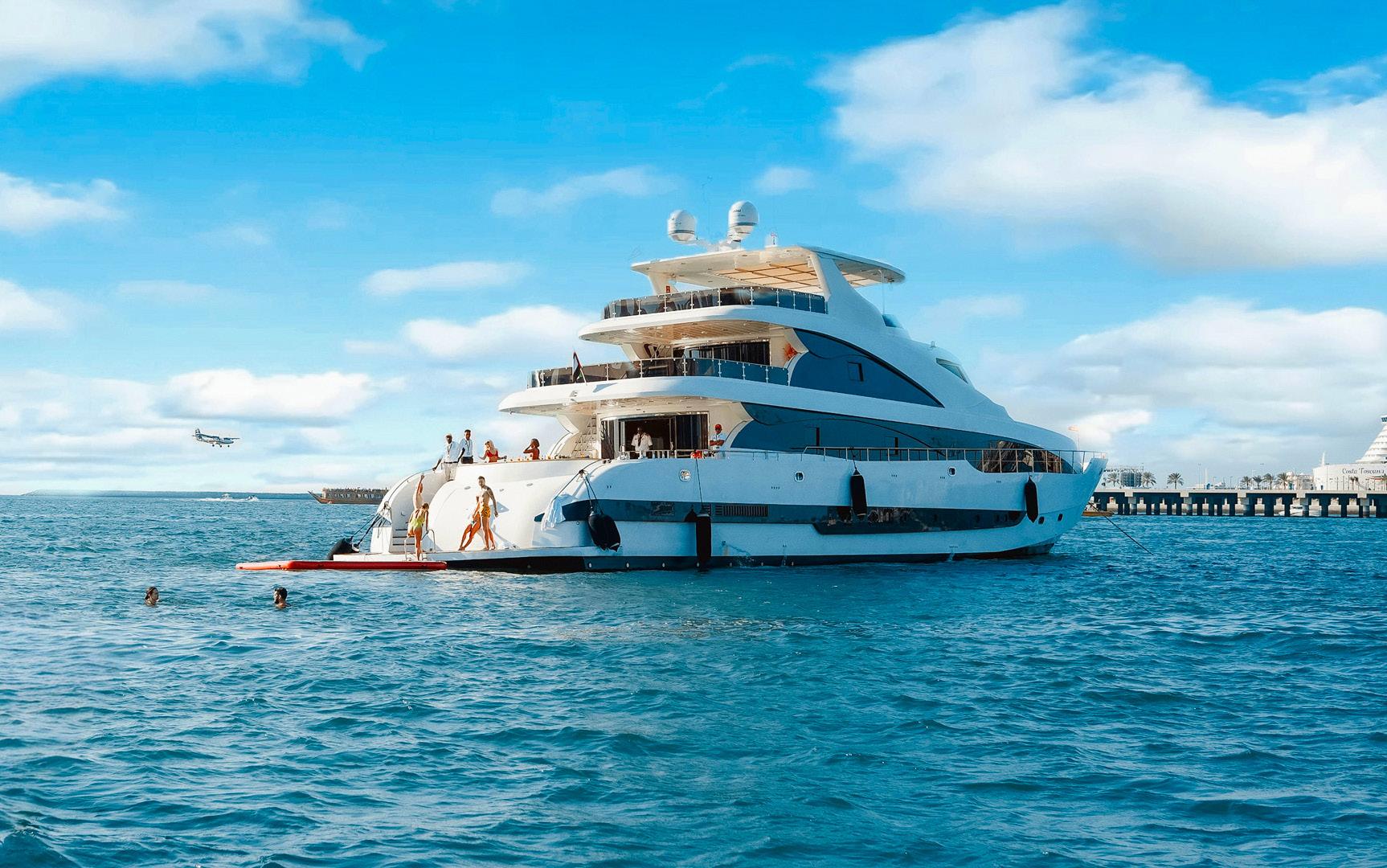



JW Marriott Marquis Dubai
Best for: Ultimate relaxation and pampering
The Saray Spa at JW Marriott Marquis Dubai presents a compelling fusion of ancient wellness traditions and contemporary luxury, drawing inspiration from the historic caravanserais that once served travellers along the Silk Trade Routes. Located on the third floor of Dubai's towering landmark, this award-winning facility spans 17 treatment rooms across separate male and female areas, including two private hammam chambers and Dubai's only Dead Sea treatment room complete with its own flotation pool. The spa's signature Dead Sea Journey treatment exemplifies this authentic approach, utilising mineral-rich elements imported directly from Jordan combined with traditional healing techniques that have withstood centuries of refinement.
The facility's commitment to cultural authenticity extends beyond individual treatments to encompass the entire guest experience, from the frankincense-scented reception area to the carefully orchestrated post-treatment relaxation rituals. With operational hours from 6:00 AM to 11:00 PM daily and special weekday pricing during Wellness Hours, the spa accommodates both intensive wellness journeys and convenient escape sessions. The therapeutic expertise of highly trained therapists, combined with synthetic-free botanical products and comprehensive facilities including steam rooms, saunas, and heated stone loungers, establishes this as Dubai's premier destination for authentic Middle Eastern wellness experiences within a thoroughly modern luxury hotel context.

Bentley's assertive new Black Edition models have broken cover, bringing a sinister visual makeover to the Continental GT, GTC and Flying Spur. Limited to just 400 examples worldwide, these darkened beauties combine the brooding aesthetics of Blackline specification with a formidable 680 PS hybrid powertrain

BBentley has always been synonymous with understated opulence. The kind of vehicles that whisper wealth rather than scream it. Now, with the introduction of their new Black Edition models, the British marque has taken this philosophy to its logical conclusion by draining almost all colour from their most prestigious offerings.
For the first time in the company’s storied history, the iconic ‘Winged B’ badges have been rendered in gloss black, alongside matching boot lettering. The result is a trio of vehicles that look as though they’ve been designed specifically for executives who conduct their business affairs after sunset. Production will be strictly limited to 400 examples worldwide, all constructed at Bentley’s Dream Factory in Crewe.
What makes these models particularly special is the marriage of visual drama with genuine performance credentials. The Black Edition specification combines the potent High Performance Hybrid powertrain with the GT Speed’s Performance Active Chassis and Sports Exhaust – previously only available on Speed models. The result is a driving experience that promises to be as aggressive as the aesthetics suggest.
The exterior treatment of the Black Edition models represents a
masterclass in restraint. Rather than festooning these vehicles with garish accoutrements, Bentley has employed subtraction as its primary design tool. The Blackline specification creates a stealthy visual impression through careful attention to detail.
Matrix grilles, bumper grilles and brightware are all finished in gloss black, complemented by a Beluga black front splitter. Those gloss black Bentley badges and lettering provide a distinctly menacing touch that sets these models apart from their more conventional siblings. The 22-inch ten-spoke alloy wheels come in gloss black as standard, though punters can opt for a duo-tone black and bright machined finish if absolute darkness proves too much.
The Continental GT and GTC variants feature the recently introduced Harmony single headlamp design, complete with that rather theatrical welcome animation that greets drivers upon approach. Perhaps most striking of all, however, is the optional splash of Mandarin orange brake callipers – available at no extra cost. They provide a single, vivid counterpoint to the otherwise monochromatic scheme, like a flash of danger in the darkness.
Inside the cabin, Bentley has maintained the noir theme while ensuring occupants remain suitably cocooned in luxury. The Black Edition namestyle appears embroidered on the front seat headrests of Continental models and all four headrests in the Flying Spur variant.
Piano Black veneer dominates the trim surfaces, complemented by Black Edition treadplates and contrast stitching in the
owner’s chosen hue. The specification includes Comfort seats, mood lighting, the rather clever Bentley Rotating Display, sports pedals and comprehensive mood lighting options.
The overall effect manages to be both sporty and sophisticated – perfect for the sort of driver who wishes to travel quickly without attracting undue attention. That said, the contrast stitching option does allow for a degree of personalisation should one wish to reveal a hint of personality beneath the dark veneer.
Beneath the shadowy exterior lies genuine performance substance. All Black Edition models harness Bentley’s new High Performance Hybrid powertrain, which combines a substantial 520 PS 4.0-litre V8 engine with a 190 PS electric motor.
Together, they develop a peak output of 680 PS and a tarmac-rippling 930 Nm of torque. The Continental GT will dispatch the 0-100 km/h sprint in a mere 3.7 seconds, while the Continental GT Convertible and Flying Spur require just 3.9 seconds to achieve the same benchmark. For context, these figures actually surpass those of the previous-generation GT Speed.
Despite this prodigious performance, the Black Edition models maintain a degree of environmental consideration with the capability to travel approximately 50 miles (80 km) in electric-only driving mode. When the petrol engine does fire up, the included Sports Exhaust ensures the V8’s characteristic snarl is suitably intensified at full throttle.
Perhaps most significant for driving enthusiasts is the inclusion of Bentley Performance Active Chassis technology – previously exclusive to the 782 PS Speed models. This system allows drivers to explore an expanded range of dynamic capabilities, from luxury-focused Comfort and Bentley modes to a properly engaging Sport setting.
Select Sport mode and the system will send up to 100 per cent of available power to the rear wheels, delivering more natural, intuitive and agile driving dynamics. The mode also significantly alters the rear-wheel steering calibration while firming up damping and anti-roll bar settings.
The result is more direct steering and greater agility, providing drivers with a deeper connection to their vehicle. It’s the sort of technology that transforms a luxury grand tourer into something approaching a genuine sports car when circumstances permit, without compromising the fundamental refinement expected of a Bentley.







While the automotive world pivots toward silent electric powertrains and screen-dominated cockpits, De Tomaso has crafted something profoundly different. The production-ready P72 supercar stands as a magnificent counterpoint to current trends – an unabashed celebration of mechanical excellence accompanied by the symphonic notes of a supercharged V8
RRevealed in Affalterbach, Germany, the P72 marks the culmination of a considered six-year journey from concept to reality. First showcased at the 2019 Goodwood Festival of Speed, this automotive tour de force now emerges in its definitive form – a sophisticated ode to driving pleasure that prioritises genuine connection over digital interference.
The P72’s chassis represents the pinnacle of carbon composite craftsmanship. De Tomaso has developed a clean-sheet carbon fibre structure woven entirely in 4×4 twill weave, extending from the central monocoque through the front and rear subframes.
Remarkably, at its core lies a unibody monocoque formed from a single, uninterrupted piece of carbon fibre with no bonded sections. This technical achievement enhances structural rigidity, reduces overall mass, and establishes new standards for architectural purity. The chassis serves as both engineering triumph and aesthetic statement.
Rather than adapting existing architecture, De Tomaso pursued a ground-up solution through years of rigorous development. This approach grants precise control over suspension geometry, mounting points, and overall balance. The resultant structure supports the P72’s purposeful driving position while positioning the powertrain at the lowest possible point within the chassis,

delivering optimal weight distribution and a low centre of gravity – essential characteristics for genuine driver engagement.
The P72 interior presents a refreshing departure from contemporary automotive design. The cockpit eschews digital displays in favour of mechanical intimacy – traditional analogue instruments, bespoke switchgear, and a driver-focused layout that prioritises tactile connection above all.
Commanding attention at the centre is an exquisitely crafted exposed linkage shifter – a suspended sculpture in polished metal that connects driver to the six-speed manual gearbox through direct mechanical action. It encapsulates De Tomaso’s philosophical approach: tactility, artistry, and emotional engagement.
While a discreet phone holder acknowledges practical necessity, there exists no digital integration between device and automobile. The P72 asserts that the road surface provides all necessary feedback, with the engine note serving as the definitive soundtrack.
Every surface reflects deliberate craftsmanship – from handstitched leather to precisely finished metal components. Throughout the vehicle, individually milled aluminium elements are crafted by skilled artisans and finished in one of three distinctive treatments – bead-blasted, hand-brushed, or handpolished – executed with the precision typically reserved for fine horology.
Mechanical heart with authentic character
De Tomaso’s heritage is inextricably linked with V8 power, a

tradition the P72 continues with aplomb. At its core beats a hand-assembled 5.0-litre supercharged V8, developed exclusively for the ‘P’ platform. Featuring bespoke forged internal components and a proprietary De Tomaso supercharger, this powertrain delivers 700 hp and 820 Nm of torque.
Performance philosophy focuses not on abstract velocity records but on genuine driving pleasure. With carefully selected gear ratios, the drivetrain provides exhilarating mid-range acceleration – responsive, immediate, and emotionally satisfying. The 1960s-inspired header design transforms the P72’s V8 into an expressive mechanical instrument.
Perhaps most tellingly, the P72 dispenses with selectable driving modes and electronic intermediaries. It presents a pure, unfiltered connection between road, engine and driver. Beneath the carbon structure lies a pushrod suspension system developed for classical handling characteristics. The three-way manually adjustable damping allows drivers to tailor mechanical behaviour to preference without electronic intervention.
Complemented by efficient aerodynamics, the P72 rewards driver familiarity and skill. Each journey becomes a nuanced dialogue between mechanical balance and driver confidence.
The vehicle unveiled represents De Tomaso’s internal production specification, constructed outside the 72 customer allocations. It demonstrates the design, engineering and build quality standards that awaiting owners will receive when deliveries commence in late 2025.
Each of the 72 production examples will be individually commissioned and crafted with tailored finishes reflecting De Tomaso’s core values – an approach that contrasts sharply with standardised production methods.


Aston Martin's specialised Q division has crafted a remarkable one-off DB12 Volante that captures the essence of coastal Florida living. This exclusive convertible combines nautical-themed craftsmanship with the brand's signature performance credentials. Every detail celebrates the Palm Beach aesthetic whilst maintaining the sophisticated engineering that defines modern Aston Martin
QQ by Aston Martin and the company’s Palm Beach dealership latest collaboration has produced something rather special: a singular DB12 Volante that transforms the open-top Super Tourer into a rolling homage to Florida’s most prestigious coastal enclave. This commissioned piece demonstrates how the British manufacturer’s bespoke division continues to push creative boundaries.
What makes this particular convertible fascinating goes beyond its limited production run of one. The vehicle showcases the extraordinary lengths to which the company’s craftspeople will go to realise a client’s vision, incorporating elements that would challenge even the most experienced automotive artisans.
Distinctive paintwork sets the tone
The most striking aspect of this commission lies in its exterior finish. The exclusive Frosted Glass Blue paint incorporates actual glass flakes within the topcoat, creating a shimmering effect that mirrors sunlight dancing on water. This complex finish requires hand application due to its delicate nature, making it impossible to achieve through conventional spray methods.

Club Sport White pinstripes accent the front splitters, side sills and rear sections, emphasising the vehicle’s athletic proportions. The treatment extends to the five-spoke wheels, finished in Gloss Jet Black with diamond-turned details that complement the overall aesthetic without overwhelming the design.
The cabin reveals where the commission truly distinguishes itself from standard offerings. Aurora Blue and Ivory leather dominate the seating surfaces, punctuated by Spicy Red contrast stitching that adds visual warmth. Palm-leaf embroidery appears throughout the interior, from seat facings to door panels, creating a cohesive theme that avoids becoming gimmicky.
The attention to detail extends to practical elements: customengraved aluminium sill plaques feature the same palm pattern, whilst the exterior side strakes receive milled treatment to echo this motif. Open-pore Linear Light Olive Ash wood trim, specifically selected to emulate palm wood textures, provides natural contrast against the leather surfaces.
Perhaps the most intriguing detail involves the dashboard treatment, where Palm Beach’s exact latitude and longitude coordinates appear embossed into the leather. This geographic reference transforms what could have been superficial theming into something more meaningful for the commissioning client.

The rear surfaces of the front seats feature diagonally bookmatched veneers that mirror the palm motif, complete with metal inlays engraved with “Palm Beach.” These elements demonstrate how the company’s craftspeople can incorporate location-specific references without compromising the vehicle’s sophisticated character.
Performance credentials remain unchanged
Beneath the bespoke exterior lies the familiar 680PS powertrain that defines the DB12 range. The twin-turbocharged V8 engine delivers the same compelling performance figures that have established this model as a genuine Super Tourer, proving that personalisation need not compromise engineering capability.
The convertible configuration allows occupants to fully appreciate both the visual craftsmanship and the acoustic character of the powerplant. With the roof lowered, the custom interior details become visible to observers, extending the vehicle’s impact beyond its immediate occupants.
Bespoke division capabilities highlighted
This commission exemplifies the capabilities of Q by Aston Martin, the company’s specialist personalisation service. Regional President Pedro Mota noted how the project successfully merges “stunning performance, artistry and luxury” whilst maintaining the understated approach that characterises both the brand and its target location.
The creation process involved collaboration between the bespoke division’s designers and craftspeople, demonstrating how complex commissions can be realised when creative vision meets technical expertise. Every component, from subtle accent pieces to completely tailored elements, receives individual attention during the specification process.
Such projects often inspire additional commissions, as clients recognise the potential for creating truly unique vehicles that reflect personal tastes whilst maintaining the engineering integrity that defines the marque. The possibilities remain virtually limitless when working with the dedicated team, ensuring ambitious requests can be accommodated within the framework of what remains fundamentally an Aston Martin.





BOVET has delivered another breakthrough with the Récital 30, making their revolutionary world time system accessible for daily wear. Building on the award-winning Récital 28 Prowess 1, this latest creation brings six years of development into a wearable format that finally conquers the Daylight Saving Time puzzle
TThe horological world witnessed something rather extraordinary in 2024 when the Récital 28 Prowess 1 became the first mechanical timekeeper to crack the Daylight Saving Time conundrum. The Swiss manufacture has followed up with the Récital 30, a focused evolution that makes this ground-breaking technology available to a broader audience.
Where its predecessor was limited to just 60 movements, the new model opens access to the innovative world time system, though production remains constrained to 30 pieces annually.
The Récital 30 borrows the innovative roller mechanism from its bigger sibling, enabling accurate display of 25 global time zones across four distinct periods throughout the year. This addresses the fundamental flaw that has plagued world time watches since Daylight Saving Time was introduced - traditional models were perpetually incorrect during DST periods.
Each of the 26 rollers contains four positions, controlled by pushers on the right side of the case. The top pusher rotates each roller 90 degrees, simultaneously setting all 24 time zones to the appropriate seasonal
period. The bottom pusher advances the central 24-hour world dial by one hour increments.
Two distinct versions highlight New Delhi, acknowledging India's unique 30-minute offset. The first version features New Delhi in black with a colour-matched arrow indicator and corresponding minute hand. The second variant caters to collectors based in India, linking the main hands directly to New Delhi time.
Pascal Raffy, who acquired the company in 2001, explains: "India is a country growing fast on the global stage. The collectors there are very knowledgeable and demanding of true excellence."
Manufacturing comes in-house
For the first time, the organisation is producing cases entirely at their Tramelan facility. All titanium cases emerge immediately, while 18K red gold versions follow from 2026. Both incorporate sapphire crystal exhibition case backs, a feature the company pioneered in the 1800s.
This vertical integration allows enhanced interaction between technical teams while maintaining quality control. The design recalls vintage aesthetics through shaped hands and domed sapphire crystal, creating what Raffy describes as "a window to the universe."
The Récital 30 transforms six years of development into something genuinely useful for modern global connectivity, prioritising function over decoration through world time rollers that dominate nearly the entire dial.


